AVIONICS: MITIGATING GNSS JAMMING AND SPOOFING
SAFETY: A CALL TO ACTION ON RUNWAY INCURSIONS
ROTORCRAFT: SIKORSKY SEES RESURGENCE
Special Report: Mental Health Paradox

AVIONICS: MITIGATING GNSS JAMMING AND SPOOFING
SAFETY: A CALL TO ACTION ON RUNWAY INCURSIONS
ROTORCRAFT: SIKORSKY SEES RESURGENCE
Special Report: Mental Health Paradox
The next generation of aerial transportation may belong to hydrogen fuel-cell and hybrid-electric aircraft






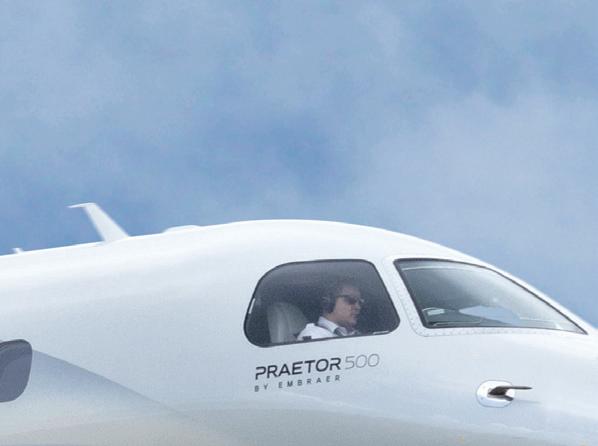

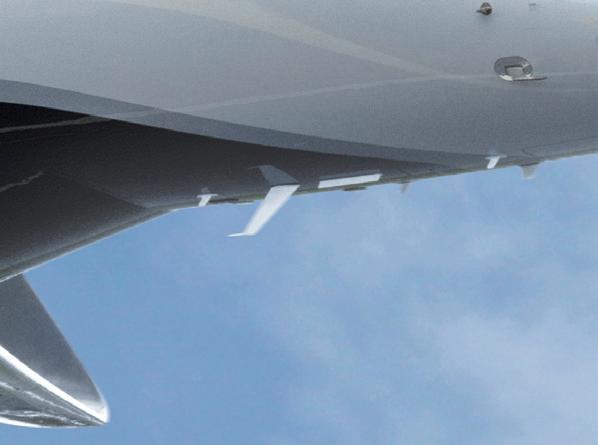




23 Special Report: Tackling aviation’s mental health paradox

30
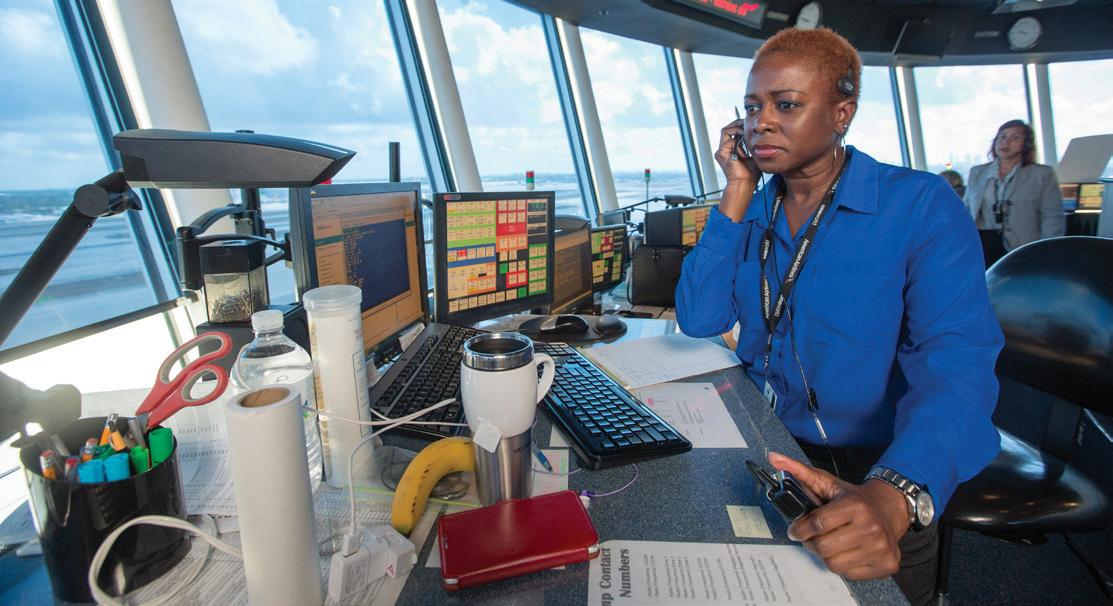
34 Industry sees little sign of easing on workforce woes
4 Gulfstream 2023 business jet deliveries set to soar in 2024
6 Bombardier reveals first partners for EcoJet project
8 Honda Aircraft celebrates delivery of 250th HondaJet
10 Bombardier shipments reach 138 in 2023, expected to jump in 2024
12 GNSS jamming and spoofing events present a growing danger
20 Hybrid pragmatism could be the vanguard for aviation’s electric dreams
42 Asia-Pacific air transport shaking of post-Covid hangover


Delays in FAA certification for the Gulfstream G700 “deprived” parent company General Dynamics of $1 billion in revenue and $250 million in earnings last year at its aerospace division, General Dynamics chairman and CEO Phebe Novakovic said during the company’s fourth-quarter and full-year 2023 investor call in January.
The company had planned for FAA approval and deliveries of 15 G700s in December, which didn’t materialize due to circumstances “outside of our control,” she said, referring to the U.S. agency and implying the longer certification process because of the Boeing Max debacle. Customers of these 15 G700s were told prior to the earnings call to prepare for deliveries in the current quarter.
Last year, Gulfstream delivered 111 jets (89 large-cabin and 22 super-midsize G280s), down from 120 (96 large-cabin and 24 G280s) in 2022 and missing its downgraded 2023 estimate of between
133 and 135 aircraft. Still, General Dynamics’ aerospace division, which includes both Gulfstream and Jet Aviation, saw year-over-year increases of about $50 million in both revenues and earnings, to $8.621 billion and $1.182 billion, respectively.
Aerospace backlog climbed to $20.454 billion as of December 31, up from $19.516 billion a year earlier. Novakovic said the Gulfstream sales pipeline remains “robust and wholesome” and noted that the aerospace division’s book-to-bill ratio was 1.2:1 last year.
Looking ahead, the General Dynamics chief said Gulfstream is poised to deliver 160 jets this year, including 50 G700s and fewer G280s due to the conflict in Gaza (G280s are manufactured for Gulfstream by IAI in Tel Aviv). Aerospace revenues and earnings are predicted to soar by 12 percent and 33 percent, respectively, in 2024, she said. z
Embraer Executive Jets posted a 12 percent increase in deliveries year-over-year. The company handed over 115 business jets in 2023, including 74 Phenoms (11 Phenom 100s and 63 Phenom 300s) and 41 midsize Praetors divided nearly evenly between the Model 500 and 600. Supply chain delays afected its delivery total, which was just under its 2023 guidance of 120 to 130 deliveries. The OEM’s private jet business finished the year with a book-tobill ratio of more than 1.3:1 and its backlog rose by 10 percent year-over-year to $4.3 billion, a growth of $400 million.
Textron Aviation’s deliveries in 2023 dropped to 168 from 178 a year earlier. Even so, its revenues in 2023 increased by $300 million year-over-year to about $5.37 billion. Last year’s aircraft deliveries included 25 M2 Gen2s, 30 Citation CJ3+s, 31 CJ4 Gen2s, 17 Citation XLS+ Gen2s, 41 Latitudes, and 24 Longitudes. Seventy-nine Caravans were delivered in 2023 and 18 SkyCouriers, as well as 31 King Air 260s and 25 King Air 360s.
Protestors from Extinction Rebellion demonstrated outside Farnborough Airport on January 27 to oppose the expansion of private aviation at the London-area facility. The group marched from the center of the town to the airport, calling for all private flights to be banned. The planning committee of the local Rushmoor Borough Council is expected to consider Farnborough Airport’s application to increase the annual limit on flights from 50,000 to 70,000. The airport also wants to be able to accept more aircraft weighing between 55 and 80 tonnes.




Bombardier has named the first research partners for its EcoJet project, which aims to reduce business jet emissions by 50 percent through aerodynamic blended-wingbody (BWB) designs. The Montreal-based business jet manufacturer announced that it has enlisted two Canadian partners—the University of Victoria’s Centre for Aerospace Research (CfAR) and Quaternion Aerospace—to collaborate on the EcoJet project.
Quaternion Aerospace is a research and development firm in British Columbia that specializes in the design and manufacture of energy-efficient aircraft. It provides consulting services for OEMs such as Bombardier.
CfAR has extensive experience in the development of autonomous uncrewed aerial systems (UAS), or drones, for
research purposes, as well as commercial and military applications. The institution has designed, built, and tested several scaled demonstrator aircraft over the years, including the first two EcoJet technology demonstrators.
“Through this collaboration, our students and researchers are gaining critical real-world skills while helping to push forward the frontiers of sustainability and redefining the boundaries of what is possible for the future of the global aviation industry,” said CfAR director Afzal Suleman, who teaches mechanical engineering at the university.
Bombardier launched the EcoJet program 15 years ago and flew its first subscale demonstrator in 2017. The EcoJet team revealed its second technology demonstrator at EBACE 2023. z
Piper Aircraft on February 5 unveiled the M700 Fury turboprop single, which will replace the M600SLS. FAA certification of the M700 is expected this month and validations by Transport Canada, EASA, the UK CAA, and Brazil’s ANAC are set to take place in the second half. The six-seat, $4.1 million M700 shares the M600SLS’s Garmin G3000 avionics with Autoland but it is powered by a 700-shp Pratt & Whitney Canada PT6A-52 with a five-blade Hartzell propeller, a 100-shp increase from the M600’s PT6A-42A. The more powerful engine delivers better performance during climb and at high altitude and improvements in takeof and landing distance.
Global Jet Capital (GJC) has topped $4 billion in aircraft financing originations for newproduction and preowned jets—a milestone reached a decade after its founding. GJC was established in 2014 to focus on business aircraft financing solutions and it grew rapidly with the purchase of the $2.5 billion portfolio from GE Capital in 2015. Since 2018, GJC has issued some $3.6 billion in asset-backed securitizations backed by business jet and operating lease loans.
Business aircraft charter firm Vista reported a strong performance last year, including a 20 percent growth in subscription hours and member base and 17 percent rise in on-fleet hours globally. The company reported that, in 2023, it grew to 5 percent total market share and expanded its global presence with 50 percent of total flight hours coming from outside of the U.S., following the decision to move its global footprint into Africa and the Middle East.


Honda Aircraft delivered its 250th HondaJet since deliveries began in 2015, and it celebrated the milestone with employees at a January event at its Greensboro, North Carolina headquarters.
Since its introduction, the HondaJet has undergone a series of updates, boosting the original range of about 1,200 nm to the latest Elite II’s 1,547 nm. Maximum cruise speed is 422 knots and maximum altitude FL430, and it can accommodate up to eight occupants. The HondaJet is powered by two GE Honda Aero HF120 turbofans. Avionics are a Garmin G3000 suite.
The HondaJet’s unique over-the-wing engine mount (OTWEM) configuration was originated by the aircraft’s principal designer, former Honda Aircraft president and CEO Michimasa Fujino. Removing the engine mount structure from the aft fuselage allows for an enclosed lavatory in the rear, and it reduces cabin noise. The placement of the engines also delays
drag rise, enabling more efficient highspeed cruise.
From the beginning of the program, Fujino said that the OTWEM design would be adaptable to larger aircraft. Prior to retiring in 2022, he introduced Honda Aircraft’s next project, the light jet 2600 Concept, now named Echelon, with a range of 2,625 nm, max cruise of 450 knots, and seating for up to 11 occupants.
“The 250th delivery milestone is not just a number, but a narrative of our constant pursuit of excellence and innovation,” said Honda Aircraft president and CEO Hideto Yamasaki. “We are grateful for the global recognition and trust that customers place in the HondaJet. We remain dedicated to advancing the aviation industry, continuously pushing the boundaries of skyward mobility to enhance joy and freedom for customers.”
The HondaJet fleet has logged more than 210,000 flight hours with dispatch reliability of 99.7 percent. z
Portsmouth, New Hampshire-based fractional ownership provider PlaneSense is expanding its Pilatus PC-24 program to west of the Rockies, with plans to eliminate its out-of-area fees for those clients by the end of June. With the changes, the jet program will operate in the Lower 48 states and parts of Canada without restrictions—similar to the PlaneSense program for its Pilatus PC-12 turboprop singles. The move comes as PlaneSense took delivery of its first upgraded PC-24 in late December, with plans to take five more this year.
A hangar collapse on January 31 at Boise Airport in Idaho claimed the lives of three people and injured nine. The 39,000-sq-ft hangar was under construction for Jackson Jet Center. The hangar was an expansion announced last year by Jackson Jet Center, an FBO and business air charter and maintenance provider. City permit records show Big D Builders as the contractor for the hangar. OSHA spokesperson Michael Petersen told AIN that the investigation is in its early stages and it will be several months before it can share any findings.
Premier Private Jets has acquired additional MRO capacity and an FBO in Dayton, Ohio, from Stevens Aerospace and Defense Systems. Stevens had planned to close the facilities as part of a consolidation efort. Premier is operating the MRO under the name Premier Aviation Services and the FBO as Premier Jet Services. The addition of Dayton provides more capacity to support Premier’s fleet, as well as other aircraft. The purchase strengthens Premier’s FAA Part 145 repair capabilities by adding a third MRO location. Premier said customers can expect a “seamless” transition as they work with its existing teams.


We are
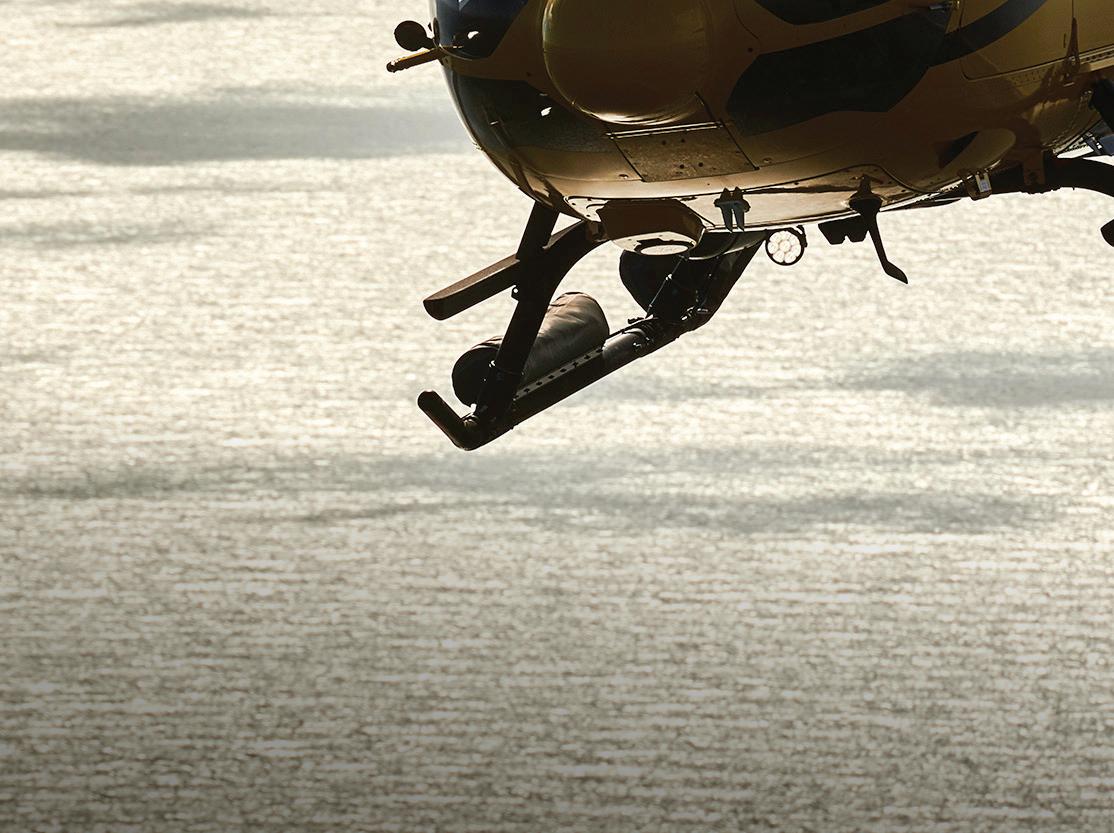

We are expanding and strengthening our commitment to our members as they explore new heights in vertical aviation. VAI provides connection, education, advocacy, safety, and support to everyone associated with our industry. And together, we will strengthen communities around the world through the power of vertical flight. Learn more, visit verticalavi.org

Bombardier’s revenues climbed by 16 percent year-over-year in 2023, topping $8 billion, as it scaled deliveries to 138 Challengers and Globals, the company reported. Further, the Montreal-headquartered business jet manufacturer expects deliveries to take another step up to between 150 and 155 this year, returning to levels not seen since 2016.
However, Bombardier expects most of that growth to come from its super-midsize Challenger 3500s this year, with Global deliveries remaining stable. Bombardier president and CEO Éric Martel said this is purely a function of balancing production in the face of supply-chain uncertainties.
“While we have everything in place to achieve our objective, I want to highlight
that our delivery profile for the year is largely set by the pace at which we receive parts from our supplier,” he said. “We are in an environment where we continue to play the cards we are dealt versus planning an ideal production schedule.”
As such, Bombardier projected revenues to grow to between $8.4 billion and $8.6 billion this year, with aftermarket also helping that bump. Meanwhile, Global deliveries are anticipated to expand in 2025.
As for 2023, deliveries were up by 15 units year-over-year, with Challenger shipments increasing by 13, to 63, and Globals by five, to 75. However, 2022 totals also included three shipments from the now-discontinued Learjet line. z
The exact cause of an uncommanded flap movement on a Bombardier Challenger 604 departing London-area Farnborough Airport on Aug. 10, 2022, has not been fully resolved. According to a UK Air Accidents Investigation Branch report, the German-registered Challenger experienced an uncommanded flap movement above the maximum flap extension speed, during which the flaps moved to their fully extended position. The aircraft returned to Farnborough with the flap extended, but subsequent testing on the ground could not determine the reasons for the malfunction. It was established that a latent failure in the No. 1 flap retract relay had occurred on at least the previous 64 flights.
Daher is moving forward on a “Take Of 2027” strategic plan under which the French aerospace group intends to achieve growth through newly restructured business units. By Jan. 1, 2026, the TBM and Kodiak programs will fall under a new Daher Aircraft division. Meanwhile, in 2023 revenues improved by 27 percent to €1.65 billion ($1.78 billion). Daher delivered 74 aircraft last year, including 56 TBMs and 18 Kodiaks.
Sustainable aviation fuel (SAF) producer LanzaJet opened the world’s first ethanolto-SAF refinery in Soperton, Georgia, in late January. The Freedom Pines facility represents the first viable next-generation SAF technology capable of scaling production to levels needed to help aviation decarbonize. It will use sustainable feedstocks, including agricultural waste, municipal solid waste, energy crops, and captured carbon from industrial processes. At full capacity, it will produce 10 million gallons of SAF or renewable diesel a year.



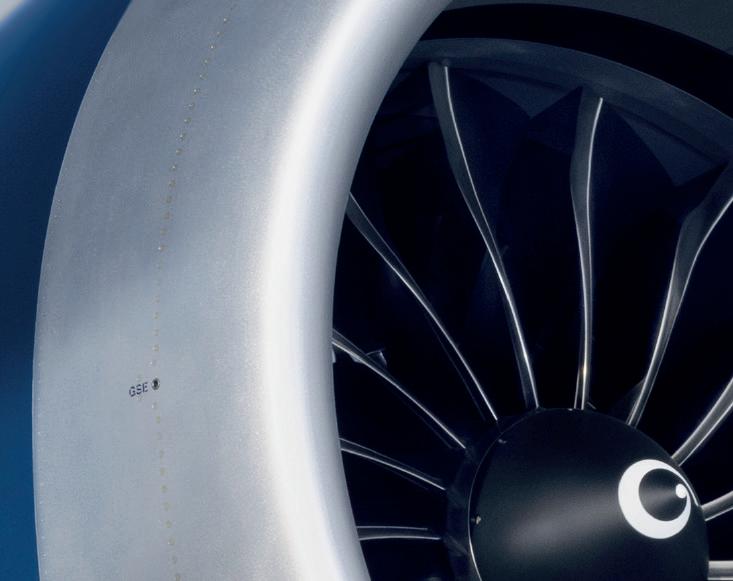




















Many reports of jamming and spoofing come from conflict zone areas of the world.
Last year, reports that fake signals were jeopardizing aircraft navigation systems spiked over regions near conflicts.
First reported by security intelligence organization OpsGroup, the reports cited false or jammed global navigation satellite system (GNSS) signals, affecting the U.S. global positioning system (GPS) civil signals, causing aircraft navigation systems to show missing or inaccurate position information.
GNSS is an all-encompassing term referring to any satellite-based position, navigation, and timing (PNT) system that provides information to receivers such as portable GPS units and those installed in aircraft. The U.S. GPS is one such GNSS, and there are others such as Europe’s Galileo, Russia’s Glonass, China’s BeiDou, and regional systems in Japan and India.
Receivers can be made to operate on multiple GNSS constellations or just one.
Most aircraft GNSS receivers use only the U.S. GPS constellation, while many portable GNSS receivers and watches with GNSS capability tap into multiple constellations.
Jamming overwhelms relatively weak GNSS signals, and in the U.S. and many other countries, it is against the law to compromise GNSS. Spoofing is more sophisticated, tricking the receiver into calculating a false position, which could send an aircraft off the desired course. Many
modern avionics products rely on GNSS, and jamming and spoofing can cause problems beyond navigation, such as the autopilot switching off.
GPS spoofing continues to expand and increase, according to OpsGroup, which earlier said it has received nearly 50 reports of fake signals impacting aircraft operators. The group’s reporting last September cited a dozen reports of aircraft being targeted with fake signals as they flew over Iraq near the Iranian border. In many cases, this led to a complete loss of navigational capability.
In late October, reports flowed in from operations over the eastern Mediterranean, Egypt, and on approach to Amman, Jordan. In these cases, the aircraft showed a false position of being stationary over Israel’s Ben Gurion Airport (LLBG) even though they were as far as 212 nm away from the area. More recent incidents involved flights from LLBG that are being led towards Lebanon with spoofed signals.
Other reports cited by OpsGroup include a Gulfstream G650 that experienced full nav failure on departure from LLBG on October 25. The crew reported, “ATC advised we were o ff course and provided vectors. Within a few minutes, our estimated position uncertain (EPU) was 99 nm, FMS [flight management system], IRS [inertial reference system], and GPS position were unreliable. The navigation system thought it was 225 nm south of our present position.” Similarly, a Bombardier Global Express was spoofed on departure from LLBG, receiving a false GPS position showing as overhead Beirut.
What has the experts at OpsGroup concerned is that these problems are a “realworld discovery of a fundamental flaw in avionics design. If a GPS position signal is faked, most aircraft are incapable of detecting the ruse.” Loss of navigation occurs in some cases, while in others the fake signals have led to “subtle, undetected erroneous


tracking. In the worst cases, the impact has been severe—complete loss of onboard nav requiring ATC vectors, IRS failure, and unnoticed off-track navigation towards danger areas and hostile airspace. The industry has been slow to come to terms with the issue, leaving flight crews alone to find ways of detecting and mitigating GPS spoofing.”
An important tactic to minimize the risk of spoofing, according to OpsGroup, is watching for a sudden increase in the EPU on cockpit displays (if available). Spoofing causes a “jump, hence EPU values have jumped from 0.1 nm to 60 nm, and more than 99 nm in quick order.” Further, crews may receive an EFIS warning related to navigation, with some going straight to dead reckoning mode. Another clue is a
significant change in the aircraft clock’s UTC time—reports have ranged from a couple of hours to as much as 12-hour changes. OpsGroup advises that if this occurs, crews should deselect GPS inputs as soon as possible to prevent wider navigation failure, switch to conventional navaids, and report the issue to ATC.
“The main fallback is an inertial sensor or the [IRS],” said Todd Humphreys, a PNT expert and professor at the University of Texas at Austin’s Cockrell School of Engineering. “When that gets captured, you realize that the design itself…appears to be flawed. In other words, the IRS is not double-checking the GPS, it’s simply flywheeling through periods of GPS outage. If the GPS indicates
it has a fix, then the IRS is accepting that fix without enough skepticism and updating its location and the velocity and all of its internal coefficients based on that fix.
“Most business jets have something like three or two GPS receivers and usually at least two IRSs. In other words, every one of those systems that’s purportedly redundant [is] captured by the same attack, so it doesn’t offer nearly the redundancy that those who designed it thought it would. When all of these are being affected by the same source and have a common mode failure, then it doesn’t have the level of safety and security that you might have expected.”
In his research, Humphreys partnered with a low-earth-orbit satellite network to pinpoint locations of spoofing attacks, using ADS-B outputs and anomalies in


their navigation integrity category flags. “We also look at the time history of locations reported,” he explained. “And from that time history, you can see a completely un-physical movement of the aircraft and know that the aircraft’s ADS-B unit was captured. And from all of this, you can piece together what happened.”
With this information, Humphreys was able to pinpoint the origins of spoofing attacks, one of which was the eastern periphery of Tehran in Iran. “Since that time, very similar spoofing attacks with similar effects on business jets have become pretty widespread in the area of the Israel-Gaza conflict. This might be some of Palestine’s collaborators or it could just be the Israel Defense Forces trying to protect Israel [from the enemy’s GPS-guided missiles].
“I like to say that spoofing is the new jamming, and what I mean by that is that if you have an intent to deny GPS service to your adversaries, spoofing is a more potent means of doing that than just hamfisted jamming. That’s because you don’t require as much signal power to cause the receivers you’re targeting to display either
erroneous information or to display some flag that indicates a malfunction as compared to jamming. When jamming, you have to overwhelm the authentic signals. With spoofing, you only have to have signals that are of the same magnitude as the authentic signals. They get gobbled up into the same receiver. The receiver then gets confused and can’t tell the difference and often will raise a flag and say, ‘Hey, I’m out, you can’t rely on me,’ and they have then denied you service.”
Beyond mitigations that will lower the risk of spoofing attacks, which are being addressed by the industry, Humphreys believes a better option would be to simplify the process of certifying avionics, especially software-defined radios, which are much easier to upgrade quickly.
EASA and the International Air Transport Association held a workshop in January to share incident information and remedies for GNSS jamming and spoofing. The workshop concluded that “interference with satellite-based services that provide

 TODD HUMPHREYS PROFESSOR, UNIVERSITY OF TEXAS AT AUSTIN
TODD HUMPHREYS PROFESSOR, UNIVERSITY OF TEXAS AT AUSTIN
information on the precise position of an aircraft can pose significant challenges to aviation safety.”
Workshop participants agreed on some measures to make PNT services provided by GNSS more resilient, including reporting events, eventually to a common database; sharing aircraft manufacturers’ guidance to operators; sharing EASA alerts about attacks with relevant stakeholders; and ensuring a backup system with the minimum operational network of traditional ground-based navigation aids.
“[We] have seen a sharp rise in attacks on [GNSS] systems, which poses a safety risk,” said EASA acting executive director Luc Tytgat. “EASA is tackling the risk specific to these new technologies. We immediately need to ensure that pilots and crews can identify the risks and know how to react and land safely. In the medium term, we will need to adapt the certification requirements of the navigation and landing systems. For the longer term, we need to ensure we are involved in the design of future satellite navigation systems. Countering this risk is a priority for the agency.”
EASA has also published Safety Information Bulletin 2022-02R2 on this topic.
Avionics manufacturers are well aware of GNSS jamming and spoofing issues and are working on mitigation efforts, both with existing equipment and future products. In fact, there are new standards that address these problems, including RTCA DO-384 and FAA TSO C220.
Northrop Grumman’s Litef division produces IRSs for a variety of aircraft manufacturers, and Klaus Blatter, product manager of commercial aviation, provided some background on how these systems work.
“The inertial system does not receive GPS information but calculates position solely based on the measurement of the inertial sensors (in a classical installation),” he explained. “Since this position information is not affected by GPS, it is not susceptible to spoofing or jamming. However, this pure inertial position information may not be accurate enough to maintain RNP/ RNAV requirements in the long run. GPS correction is performed on the FMS. The FMS decides also if it uses the corrected or the uncorrected position information of the IRS.”
Modern IRSs calculate a blended or hybrid GPS/IRS solution, he added, which is provided to the FMS. “In case of GPS loss (i.e. jamming), the hybrid solution automatically continues providing position information based on the inertial measurements. The status of the hybrid solution (e.g. no GPS augmentation) is also provided to the FMS. The time how long a certain RNP/RNAV operation can be maintained after GPS loss depends on the specification of the inertial system. Usually, inertial systems providing a hybrid solution are also providing a pure inertial solution in parallel.”
Blatter explained. “Spoofing is different: An inertial system with hybrid solution can perform plausibility checks of the received GPS data. These tests may detect inconsistent GPS signals and discard them. However, this depends on the kind and quality of spoofing. Even if suspicious data are initially detected, the spoofed GPS data may be regarded as valid again after they look consistent again. This means that the level of spoofing protection is dependent on how smart the plausibility checks can be done.”
“Current Honeywell ADIRUs and microIRU products output two different types of navigation parameters: a pure inertial set of navigation parameters and an inertial/ GPS hybrid set of navigation parameters. The pure inertial set of navigation outputs are not aided with GPS measurements and therefore are unaffected by loss of GPS or GPS spoofing during flight. In addition to pure inertial parameters, modern IRSs also output tightly integrated inertial/GPS hybrid navigation parameters.

The new RTCA DO-384 performance standard for IRSs will help with jamming and spoofing, he said.
How the aircraft manufacturer integrates the avionics determines whether pilots can switch off the GPS input if it is compromised. “On Litef’s inertial systems with hybrid solution, the GPS input can be switched off by commands,” he said. “But it is [up to] the system integrator if the command is implemented in the avionics.”
Pilots should be alerted to GNSS jamming, with an alert that GPS augmentation is lost,
Honeywell plans to certify an RTCA DO-384-compliant system this year for a commercial airliner and next year for its Laseref VI micro-inertial reference unit (IRU). Honeywell has also published a service information letter “describing the indications of spoofing and the expected avionics behaviors.” For more specific aircraft- and avionics-related procedures, Honeywell recommends consulting with the aircraft manufacturer. Matt Picchetti, the company’s v-p and general manager of navigation and sensors, offered additional information about Honeywell’s IRUs.
“Current Honeywell ADIRU and micro-IRU products readily have some level of resilience to GPS spoofing for their inertial/GPS hybrid outputs. Honeywell has performed baseline testing of its inertial/GPS hybrid software against relevant industry standards. Results of that testing indicate that Honeywell’s state-of-theart products can maintain integrity of the hybrid horizontal position output by rejecting a spoofed GPS position shift of 60 nm over a 60-minute exposure time. However, in cases where spoofing-induced position steps persist for longer than can currently be detected and mitigated, IRS hybrid outputs will start utilizing spoofed GPS measurements.”
The newly updated IRUs, he said, “will further improve the resilience of the hybrid parameters to GPS spoofing with very low position shifts and extended durations. Honeywell’s new patented algorithms can reject spoofed GPS position shifts of 3 nm for over 60 minutes, which constitutes a breakthrough improvement compared to today’s IRS behavior.”
Universal FMSs with the latest software can’t get compromised by GNSS jamming or spoofing because of the way the FMS
uses position information from DME stations. This has long been a feature of Universal FMSs, explained Jason Mason, senior engineer, avionics systems integration. In the 1980s, Universal engineers designed the FMS with navigation sensors that are run through Kalman filters to provide the best-computed position. After the U.S. Air Force switched off the GPS system’s selective availability in 2000 and GPS thus became more accurate for civil users, Universal weighted the Kalman filtering to GPS but demonstrated that DME scanning or triangulating based on DME position worked reliably when GPS signals were compromised. In 1991, Universal received FAA technical standard order approval for the DME scanning capability.
More recently, in response to customer concerns about jamming and spoofing, Universal issued a service letter to explain this to users and it also made it clear to pilots what the FMS is doing. This was incorporated in the FMS 1002.6 software and later versions. A banner message, for example, highlights that GNSS is not working and that DME-DME is being used, with the actual navigation position also displayed and recorded for post-flight perusal in Universal’s FlightReview app. This has also been added to FMS training software so pilots can see how the DME scanning protects against jamming and spoofing.
“Flight testing determined how well
we can navigate with DME-DME,” said Mason. “When we realized we could do that, we decided to make it more apparent to the crew.”
The 1002.6 software is available in Universal W-series FMSs (since 2006), but there is an STC available to upgrade from older units to the W-series.
Thales is aware of the threat of GNSS interference and has implemented a dedicated algorithm to detect the occurrence of spoofing. “If spoofing is detected, depending on the aircraft navigation system on board, aircraft guidance can automatically switch to sources that do not use GPS for safe continued operations,” the company told AIN. “Along with the OEMs and global aviation industry, Thales is actively engaged in the initiatives to further reinforce operations protection from spoofing, by adapting technologies and algorithms already field-proven on military platforms.”
Safran is already manufacturing SkyNaute, an inertial navigation system (INS) that meets the new RTCA DO-384 standards using its compact hemispherical resonator gyro crystal technology. “Combining high performance and integrity in all circumstances, SkyNaute shows exceptional physical features compared to competing
INS with similar performance,” according to Alexandre Lenoble, senior v-p of navigation and timing product lines at Safran Electronics & Defense.
“There are two ways Safran INSs are able to detect and mitigate interferences: inertial sensors are by essence completely immune to GNSS jamming or spoofing. As a consequence, they can be used...to monitor the correctness of the GNSS signals and the hybrid navigation solution. Another way to do it is to compute interference detection and mitigation algorithms directly on the signals provided by the GNSS receiver, before blending those signals with the inertial part. This allows the INS, once it detects the spoofing event, to switch to a pure inertial/coasting navigation mode.
GNSS jamming and spoofing has become a “hot topic,” according to Dassault pilot support engineer Mathias Paquier.
The way Dassault has set up the Honeywell avionics in its EASy-equipped business jets is not to use the hybrid feature that uses GPS to update the IRS position.“This is not exactly the same on Falcon compared to competitors,” Paquier said. “This means in practice that on Falcons, when using the IRS inputs, this input cannot be impacted by GPS spoofing. As we do not use [the hybrid inputs], the FMS cannot be impacted.”
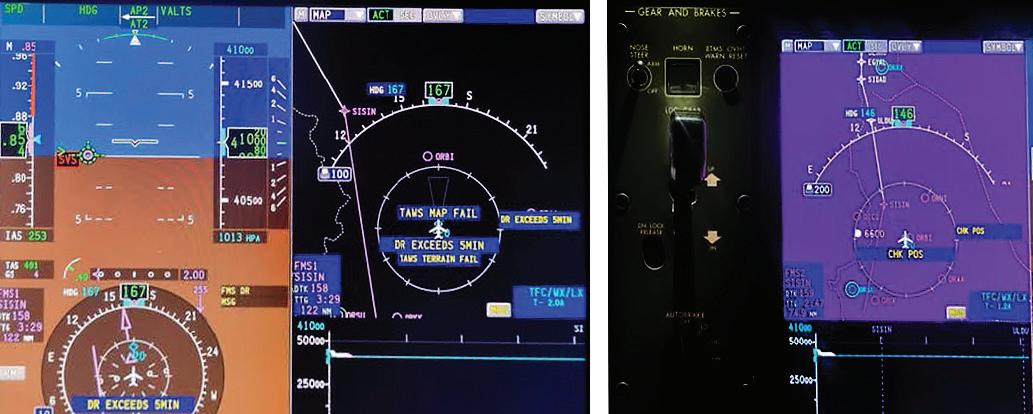
A Bombardier
Global Express crew flying near Baghdad lost GPS and saw a 60-nm position ofset, and the avionics went straight to dead-reckoning.

The Falcons’ FMS picks the sensor with the best EPU, starting with GPS. If that is compromised, the FMS then looks at the IRS position and uses DME-DME or VOR-DME. Of course, the latter requires that the airplane is within range of usable VOR-DME ground stations. But in the worst case and if the IRS would also fail, the FMS can continue navigation based on dead reckoning.
Falcon pilots should know the symptoms of GPS jamming, which include loss of synthetic vision. “This is probably the easiest one to spot,” he said. “It’s right in front of the pilots.” The next symptom would be a CAS message for ADS-B Out fail because ADS-B Out relies on GPS.
Secondary symptoms include a message such as “Unable RNP,” which indicates that the EPU is too large for the required navigation performance (RNP) in the area where the airplane is flying. The EPU isn’t displayed on the PFD permanently but can be viewed on the “show sensors” page. The enhanced mode of the EGPWS will also not be available.
“When we talk about spoofing, then things become more difficult,” Paquier said.
When a customer experienced spoofing over Hatay Province in Turkey, the navigation system showed the airplane 70 nm away from its actual position. The UTC time on the pilot’s display was incorrect, which
is a good spoofing indication, and the FMS popped up a message to “check IRS position.”
With no CAS message or obvious failure message, he explained, “It can be really difficult for the pilots to realize what’s happening.”
Dassault has issued a bulletin to operators as early as April 2022 and advises that, when flying in areas at risk of spoofing, GPS 1 and 2 should be deselected on the nav sensors page. This deselects the GPS input from the FMS so the FMS isn’t using the GPS for navigation updates. “Even if you’re spoofed, this has no impact on the FMS,” he said. “After leaving the area, you can reselect the GPS input.”
In case pilots did not anticipate GPS deselection before spoofing happens, they should still deselect the GPS input if spoofing happens, he said. “If your FMS position has been corrupted and then you deselect, it will revert to the IRS mode. It will keep
your last valid position (in this case the spoofed one) and will be updated using IRS input from there. The recommendation is therefore to perform an update of the FMS position using raw IRS position. The raw IRS cannot be impacted by spoofing. The raw IRS is not impacted because it’s not impacted by GPS. The downside is that raw IRS position is impacted by IRS drift, but at least you will come back to a reasonable position, which is then automatically updated using DME-DME or VOR-DME if within range. If you’re taking off from a spoofing area, you can always deselect GPS and update the FMS after engine start using a reference point or lat/long position [on the ground].”
Paquier, who attended the EASA/IATA summit, concluded that immediate solutions are not readily available. “The story is still unfolding.”
continues on page 56


The avid self-promoters among the companies loudly proclaiming their intention to transform air transportation with electricpowered VTOL aircraft have each done a good job of giving the impression that theirs is the fastest track to progress. But what does this mean for operators and business models unwilling to be constrained by the range and payloads of battery technology, or who are not wedded to vertical lift?
In tandem with the eVTOL crowd, there are multiple promising programs focused on what can be achieved with various hybrid-electric propulsion options on fixed-wing aircraft. Among the anticipated advantages claimed by those taking this track are that the FAA and other regulators could see less technology risk in this approach, clearing the way to type
certification under existing rules, rather than new requirements on which the ink does not yet seem to be dry.
In the business aviation mainstream, manufacturers have so far given little indication of what technology they have up their sleeves to shake a dependence on fossil fuels that transcends a switch to sustainable aviation fuel. However, Bombardier’s promising EcoJet program could bear fruit in this regard. So too could Daher’s work with Airbus and Safran on the EcoPulse hybrid-electric propulsion demonstrator based on a TBM 900 aircraft.
At Manassas Regional Airport in Virginia, Electra is now flight testing a twoseat technology demonstrator to lay the groundwork for the nine-passenger hybrid-electric STOL aircraft it aims to
certify under the FAA’s Part 23 rules in 2028. According to founder and CEO John Langford, the company is looking to fill an opening for air travel to replace cars for trips of between 50 and 500 miles.
Electra’s secret sauce is the ability to operate from strips of around 300 feet in length, including sites in urban areas, opening up countless new sub-regional commercial air services. This is based on the company’s take on blown-wing technology (also referred to as blown lift), which taps an aerodynamic effect that increases the flow of air over the wing to generate much slower airspeeds than conventional aircraft.
Electra is working to start flight testing a full-scale prototype of its as-yet-unnamed prototype in 2026. As of January, it said it has provisional sales agreements with 36
prospective operators covering more than 2,000 of the aircraft.
“Short-haul flights are a small part of [aviation’s] carbon problem, but you have to start somewhere,” Langford told AIN . “Our STOL performance means we are runway independent, and dependence on airports is a limiting factor. Our infrastructure needs are very light, and we’re not constrained by electric charging limits.”
According to Langford, a hybrid-electric STOL aircraft has a two- or three-fold payload advantage over most eVTOL designs. “We can spend that advantage in multiple ways, including lowering recurring and operating costs, and allowing passengers to bring luggage on board,” he explained.
Safran is developing a 600-kilowatt electric propulsion system for Electra. This will include a gas turbine based on the French aerospace group’s Arrano turboshaft engine driving its EngineUs 100 electric motors.
Also looking to exploit the advantages of blown-wing architecture is Californiabased start-up Odys Aviation, which is working on a nine-passenger hybridelectric model called the Alta. Using an unspecified turbine engine and electric motors, this is expected to have a range of up to 750 miles, or 200 miles on all-electric power, while cruising at 345 mph.
“With our hybrid-electric aircraft, the reserve mission can be operated on fuel, so we can use all the battery power and don’t have to save 30 to 40 percent for the
reserve,” Odys co-founder and CEO James Dorris told AIN
According to Odys, it holds provisional sales agreements with 13 undisclosed airlines, covering more than 1,200 aircraft. Odys is targeting entry into service in 2028.
Textron subsidiary Pipistrel is taking a different approach by developing both battery-electric and hydrogen-fuel-cell-based hybrid-electric general aviation and regional airline aircraft. In 2020, the Slovenian company was the first to earn an EASA type certificate for an electric aircraft when its two-seat Velis Electro trainer got approval.
Now its engineering team is focused on bringing a piston-powered version of its four-seat Panthera to market by the end of this year with full IFR capability. In the longer term, Pipistrel wants to offer a version in which the Lycoming engine would be replaced by a hydrogen propulsion system, and it sees scope for both models to co-exist in the market.
Working through joint programs such as the European Union-backed Project Heaven and Newborn with partners including H2Fly and Honeywell, Pipistrel has been at the forefront of efforts to make hydrogen-powered aircraft technically and commercially viable. One potential outcome from this work could be a new 20-seat aircraft being developed under the working title Miniliner that is expected to be market-ready by around the end of this decade.

According to Pipistrel director of engineering Tine Tomažič, the ability to combine clean hydrogen fuel with the range flexibility of hybrid propulsion will deliver strong potential to open up new regional services. He expects the aircraft to be able to operate from 2,600-foot runways commonly found in small-town airfields that currently have no prospect of commercial air service.
Last year, Pipistrel and H2Fly, which is owned by eVTOL aircraft developer Joby, flew a hydrogen-powered proof-of-concept aircraft called Mahepa. Tomažič told AIN that the objective now is to expand the available power from current levels of “a few hundred horsepower” (or 200 to 300 kilowatts) to at least 1 megawatt. Through projects such as H2 Helios, led by aerostructures specialist Aciturri, work is now being advanced on key pieces of hardware such as hydrogen fuel tanks and how these would be integrated into new airframes.
In Toma ž i č ’s view, work on making hydrogen propulsion a reality has now moved beyond the somewhat fragmented, theoretical approach of recent years. “The work is now coming together,” he commented. “There were something like 20 concepts being considered, but we are now seeing a confluence [of approaches] that make sense technologically, performance-wise, and commercially.”
In June 2023, French start-up Beyond Aero put its marker down by announcing plans for a hydrogen-powered business jet currently called the BYA-I.


It says this could be ready to enter service in 2030, carrying four passengers on trips of just over 900 miles at speeds of 35 0 mph.
VoltAero is another start-up partnered with Safran for its four- to 12-passenger Cassio family of hybrid-electric commuter/ utility aircraft. The French company is also flight-testing a technology demonstrator as it prepares to fly a prototype of the Cassio 330 model this year. This combines the EngineUs motors with a 156-kilowatt Kawasaki engine.
VoltAero intends the aircraft, which will also include the larger Cassio 480 and 600 models, to use only electric power for taxi, takeoff, and landing, while the hybrid engine will power cruise flight to extend range (of up to 800 miles) and recharge the batteries. The company has reported provisional sales commitments totaling 218 aircraft.
Also in France, Aura Aero is stepping up work on a 19-passenger regional airliner called ERA, for which it froze the design last year.
The ERA design unveiled in May 2023 now features eight electric motors, a pair of turbogenerators, and battery packs. With a T-shaped tail and winglets, the aircraft is expected to operate on routes of up to 900 nm, although more typically probably just 200 to 350 nm, from runways as short as 2,600 feet. Aura Aero is targeting a first flight in 2026, leading to type certification in 2028, and has reported letters of intent covering more than 330 aircraft.

Increasingly strong political signals in Europe that the days of fossil-fueldependent regional air transport could be numbered appear to have spurred several start-ups. Nonetheless, airline range and payload requirements are prompting a crawl-walk-run approach.
In Sweden, Heart Aerospace abandoned plans for an all-electric 19-seat aircraft in favor of a 30-seat hybrid-electric model called the ES-30. This design, which has attracted support from the likes of Air Canada and United Airlines, is expected to operate up to around 500 miles in hybrid mode, or 125 miles with electric power. On February 1, the company announced the completion of a $107 million Series B funding round, taking its total financing to $145 million.
In December, Dutch start-up Maeve Aerospace took a similar step when it traded out previously announced plans for a 44-passenger electric commuter for an 80-seat hybrid electric model. It is aspiring to a longer range of just over 900 miles, with a propulsion system expected to consist of a pair of unspecified turboprops, two electric motors, and 10 battery packs. The company is aiming to complete its design review for the M80 model this year and bring it into service in 2031.
Some pioneers still see potential for all-electric fixed-wing aircraft. Eviation, which first unveiled its nine-passenger Alice design at the June 2019 Paris Air Show, has been operating somewhat below the radar since achieving a first flight in September 2022. It is unclear what progress has been
made towards an anticipated Part 23 type certification in 2027, with unconfirmed reports that it may be opting for what would be a second redesign of the model.
In January, the company appointed Andre Stein as its new CEO, bringing with him experience of eVTOL development with Embraer offshoot Eve Air Mobility. Former Gulfstream executive Jeff Hurford has been appointed CFO, perhaps heralding the need for fresh fundraising for a program that, like so many in the electric aviation space, claims to have multiple sales agreements in place.
Beta Technologies, which is making more tangible progress in moving its Alia250 eVTOL model towards type certification, last year confirmed it will also offer a conventional takeoff and landing version of the six-seat, all-electric design, called the CX300. This will be certified under existing Part 23 rules, with the Vermont-based company targeting first deliveries in 2025, ahead of the anticipated eVTOL approvals under the FAA’s new Part 21.17(b) rules.
For others, the preferred approach is to re-engine existing aircraft, with the Cessna Caravan and DHC-2 Beaver emerging as popular candidates for a switch to hybrid-electric propulsion. Ampaire, MagniX, and Surf Air are all working on plans for supplemental type certificate conversions. At the same time, ZeroAvia and Universal Hydrogen are advancing work to switch regional airliners such as the Dash 8 and ATR 42 and 72 to use hydrogenelectric fuel cell powertrains. z

I want to seek help more than anything. I really do. I want to get better. I just know if I try, I will have to give up on aviation, and frankly, I’d rather not be here than to do that. So here I am.
Those were the words that John Hauser left for his mother, Anne Suh, and his father, Alan Hauser, before he drove a Piper Archer TX into the ground near Buxton, North Dakota, on Oct. 18, 2021, committing suicide. He was 19 at the time and a student at the University of North Dakota John D. Odegard School of Aerospace Sciences.
John’s parents, both medical doctors, had appeared before a National Transportation Safety Board (NTSB) Navigating
Mental Health in Aviation Summit in December to share their story. “Our goal is to give a voice to the voiceless those who are silently struggling,” Suh told the summit audience and participants.
Suh said her son was among those silently struggling. He was a young man who always had a passion for all things that moved—cars, trains, and aircraft. By 11, it was aviation that drew him in, possibly because he lived within the flight path to Chicago O’Hare International Airport, she supposed. By the time he had turned 18, he had earned his private pilot’s license, a $10,000 cost that he worked numerous jobs to cover. “He was very proud of this accomplishment. He worked so hard for it,
and he paid for it himself,” Suh recalled.
In late summer of 2020, Hauser began his freshman year at UND on a presidential scholarship to study commercial aviation. “At school, he flew whenever he had the chance. He was doing well in his classes. He was passing his check rides,” she said.
In the spring of his freshmen year, he shared an online petition to support pilot mental health. His family all agreed to sign it, but they were unaware of his accompanying struggles.
The family didn’t see him much the summer before his sophomore year. He remained at UND to continue flight classes, but they did have a vacation together. “We were really grateful for the time we had,”
Suh said, describing the time with a clear, but pained voice.
On Oct. 18, 2021, John Hauser texted his parents that he was going to practice takeoffs and landings; this was typical. The next communication was not. About 40 minutes later they received another text that essentially was saying goodbye. His girlfriend had received a similar text. Panic set in, and about 90 minutes later—after desperately trying to track him down—his aircraft was found.
“John did not have a known history of depression nor any mental health conditions,” Suh said. “We did not know he was su ff ering from feelings of emptiness and sadness prior to his death.”
But Suh and Alan Hauser would learn that he was not alone. She pointed to a 2016 Harvard University study of nearly 2,000 pilots, which found that 13 percent met the criteria for clinical depression and 4 percent had suicidal thoughts.
Suh also shared more of her son’s final words that he wrote to his parents: “If there’s anything you can do for me, get the FAA to change the rules on pilots seeking help with their mental health. I know it would change a lot of things for the better and would help a lot of people.”
John Hauser’s family has since worked to raise visibility on mental health in aviation. Suh recalled that, not long after her son’s death, Alan Hauser attended a mental health in aviation summit in Chicago in which the then-FAA administrator had expressed concern about perceived barriers pilots have surrounding seeking help.
“With all due respect,” Suh said during the more recent NTSB summit, “I do not think we would all be gathered here today if these barriers were merely a perception.”
Reinforcing that message were others on the NTSB summit panel sharing their journeys of attempting to obtain special
issuance medicals as they addressed mental health issues.
Troy Merritt, a first officer for United Airlines, said he’s “become very familiar with the challenges that pilots face in managing their mental health.” A year earlier, he decided to ground himself and seek treatment for depression and anxiety after alternative actions, such as meditation, did not help.
“For many, including myself, the choice to use an antidepressant can be a very difficult one. It was especially difficult because I knew what was ahead of me; I faced months to years out of work navigating the complicated certification process to get my medical back and the possibility of being told I
could never fly again.” This only worsened his anxiety and depression, he continued.
Merritt notified his chief pilot’s office and union and found an FAA-trained psychiatrist for treatment to ensure that he would use an agency-approved antidepressant and would have detailed clinical notes on hand to satisfy requirements. The treatment worked, and within three months of using the mediation, “I’d become a new person…I knew I made the right decision.”
About seven months later, he began working to get his medical back. This has included extensive computer testing of his neuropsychological abilities and a lengthy personality assessment. Then, there was a

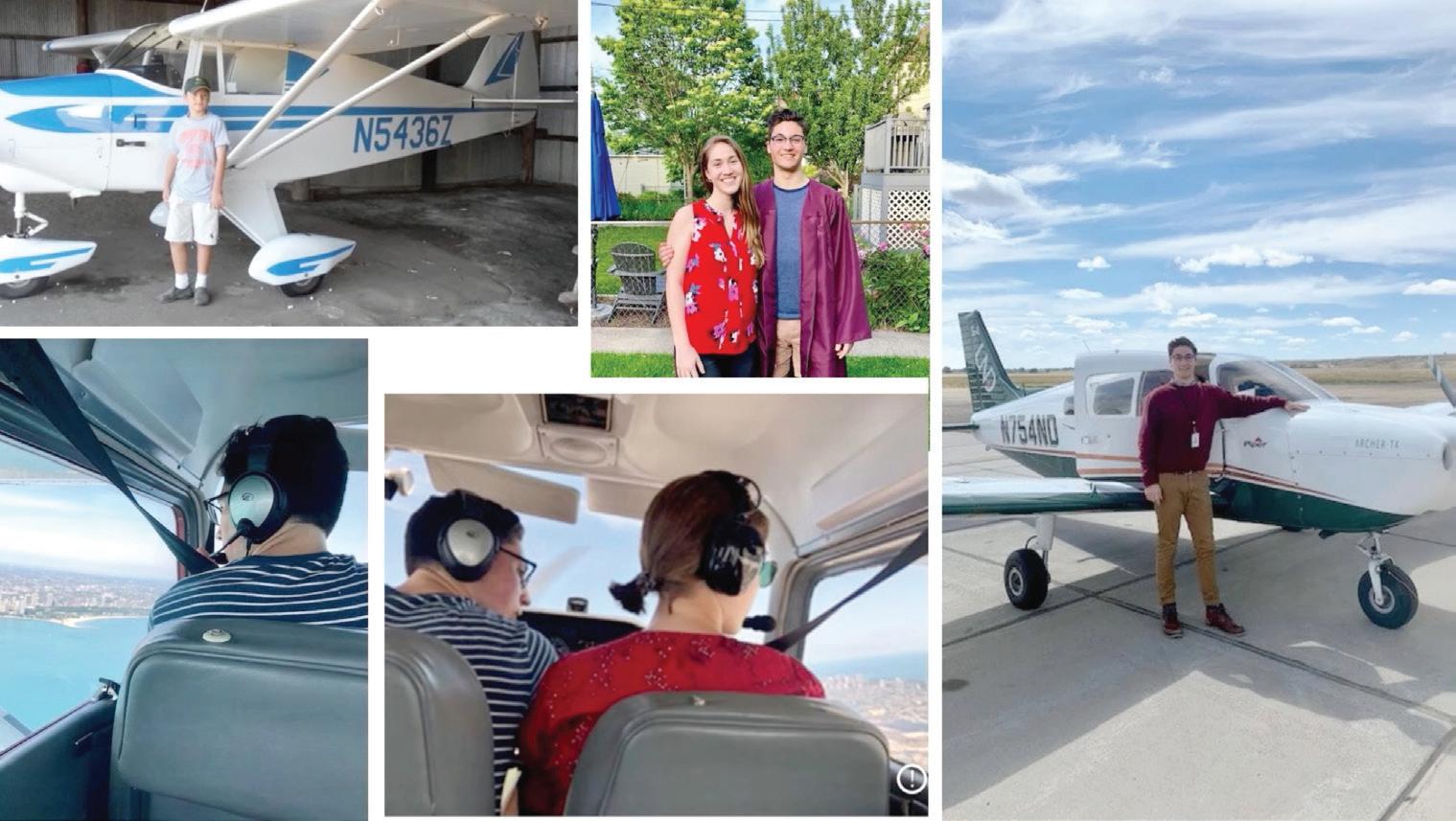
two-hour assessment with an FAA-trained psychiatrist who had to furnish a detailed report and recommendation to the FAA. The process further involved the services of an aviation medical examiner (AME) to prepare the paperwork and further evaluation.
This was completed by September 2023 at a cost of $8,000 out of pocket. “I am now waiting for the review of my application for a special issuance medical from the FAA,” he said, adding that he was told this process could take six months to a year.
He noted that he is fortunate because his union has an excellent disability insurance plan that covers medical leave for mental health care. “I am…optimistic that I will fly again,” Merritt said, “and I’m confident that when I do return to work, I will be a happier, healthier, and better pilot than I was before.”
But, he further said, “Had the barriers that are in place today not been there, I know I would have sought treatment earlier. I was terrified of navigating a mental health diagnosis as a pilot and while the process is certainly thorough, for pilots it is also a time-consuming, onerous, and expensive one that many avoid.”
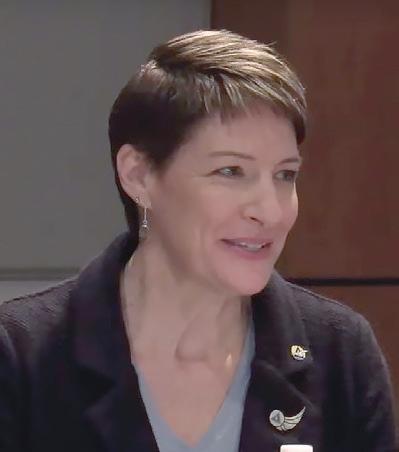 STEPHANIE DAY FLIGHT ATTENDANT WITH HORIZON AIR AND EMPLOYEE ASSISTANCE PROGRAM REPRESENTATIVE WITH THE ASSOCIATION OF FLIGHT ATTENDANTS
STEPHANIE DAY FLIGHT ATTENDANT WITH HORIZON AIR AND EMPLOYEE ASSISTANCE PROGRAM REPRESENTATIVE WITH THE ASSOCIATION OF FLIGHT ATTENDANTS
We are all here because Joe Emerson was allegedly self-medicating his mental health. He’s an example of the unintended consequences of the current mental health special issuance process. I am hopeful positive change will come as a result of this tragedy.
The process has been even more complicated for Stephanie Day, a flight attendant with Horizon Air and employee assistance program representative with the Association of Flight Attendants. Day had been hoping to transition into the flight deck and began flight training in 2015 but was denied a medical certificate because of past mental health and substance use issues. Sober since September 2016 and medication-free, Day submitted a medical certification request in January 2020. She was denied. And then denied again in 2021. She restarted the process in March 2022.
In the interim, Day worked towards a bachelor’s degree in aeronautical science with her capstone on the human intervention motivation study (HIMS) special issuance medical certification process. “I
believe the current FAA special issuance medical certification process inadequately addresses mental health,” she said.
Pointing to the incident last October of Horizon Air Flight 2059—in which an offduty pilot, Joe Emerson, had attempted to deploy the engine fire suppression system while allegedly on psychedelics—Day said, “We are all here because Joe Emerson was allegedly self-medicating his mental health. He’s an example of the unintended consequences of the current mental health special issuance process. I am hopeful positive change will come as a result of this tragedy.”
Day noted that she is in recovery from alcoholism, depression, anxiety, and post-traumatic stress syndrome. She also was incorrectly diagnosed with bipolar II
disorder. “With that kind of history, you are never going to get a medical, right? Those were the exact words my HIMS psychiatrist said during my first evaluation, and then he said, while shaking his head, ‘Do you want to continue?’”
She did and moved forward with determination. “Over the past seven years, I have complied with everything FAA has asked me to do. I’ve gone to hundreds of recovery support meetings, met with a therapist, completed required testing... breathalyzer, hair, and nail tests,” Day said. “I completed the neuropsychological and cognitive screen testing as well as numerous HIMS psychiatrist evaluations.”
Now, she is on her third application process and knows that many doctors don’t want her case. “They are not all created equal.” Along the way, she has spent more than $20,000 on the process.
She is submitting new information regarding the misdiagnosis, and said, “I do believe I will be successful in receiving a special issuance. However, once I submit my case, it will still nearly be a year before I receive that determination. Is it worth it? This is my journey, and it is worth it to me. It has pushed me to stop taking medications, quit drinking, and work the tools of recovery today. I’m healthier than I’ve ever been.”
“I think it’s important to note that it’s not just our stories, but it’s thousands of untold and yet-to-be-told stories, too,” said Tim Sisk, a principal operations inspector for the FAA, who has a background as an A&P mechanic and flight instructor for helicopters and fixed-wing aircraft.
On March 1, 2022, after being a pilot for nearly three decades, Sisk received a deferral following a routine medical exam. That deferral turned into a denial over his use of a psychoactive prescription medication.
“This medication was nothing
extraordinary. It has been in the market and FDA-approved for 40 years,” he said. “It’s very safe with very few side effects but yet disqualifying. It’s now been 21 months, and…I’ve spent over $10,000 on specialists, repeat tests and assessments, and legal assistance. I’ve submitted 297 pages of medical records.”
But despite this transparency, the FAA asks for more and more records, Sisk said. This includes his Veterans Affairs records. “The problem with that is that I’m not a veteran, and if the FAA had looked at those 297 pages, they might know that.”
Five weeks after his latest submission, he was informed that a checklist was missing. “Thankfully I’ve been able to retain my job as an aviation safety inspector, and I have the support of the people within my agency and organization. If I was a line pilot out there doing Part 91, Part 135, and Part 121 work, I don’t know how I would take care of my family.”
He pointed to “the hazard that we’re facing, in the national airspace system,” and warned: “It’s not about the people who recognize and treat their mental health— they are not the risk. They are, in fact, probably in a better place for it. It’s those who are afraid, and quite understandably, to get help because they’ve heard stories like ours.”
Laila Stein, a recent graduate of Western Michigan University’s College of Aviation, CFI at Jeff Air Pilot Services, and adjunct professor at Ivy Tech Community College, said she was hit hard by the news of John Hauser. “My heart was instantly ripped out of my chest. John and I lived parallel lives. He could have been me. I could have been him…He had the same drive to be a pilot and love of the sky as every other aviation student I knew.”
Stein provided insight into the problem from the standpoint of university students. She began her first year at Western Michigan in the fall of 2019. “Yes, I’m one of that unlucky cohort whose college experience was derailed by the pandemic.” As a community learning assistant in the aviation house mentoring hundreds of freshmen pursuing aviation careers, Stein said, “I saw firsthand when the unprecedented mental health crisis swept our campus that year. We all struggled.”
engagement and a million more questions. But the professionals didn’t have good answers. They said there was no clear directive on what was or wasn’t allowed and that anything would have to be deferred to the dreaded Oklahoma City.”
But after learning of John Hauser’s crash, “I knew,” she said, “that shining a spotlight on this issue is life or death for so many pilots.”
She devoted her honors thesis to the issue, studying aviation students’ perceptions of the FAA’s rules governing mental health. Some 75 percent of students surveyed deemed the FAA‘s rules on getting mental health help while keeping a medical as either restrictive or very restrictive, and more than half said they would not believe someone—even if they trusted that person—who told them that they could see a mental health professional and keep their medical. And nearly half said the rules negatively affected their desire to seek professional assistance.
Therapists were booked completely nationwide, overwhelmed by the demand. Confusion reigned over how mental health affected aviation medicals, she said, with stories circulating such as that even an attention-deficit/hyperactivity disorder (ADHD) diagnosis in the third grade means disqualification. Nobody knew what was true.
“Meanwhile, I watched more than one of my classmates self-medicate with alcohol because they could not afford to stop school and deal with a deferred medical issue due to asking for help,” Stein said.
As a result, she joined a group of students to host two town halls on mental health access and policies. “Both town halls yielded unbelievable interest and
While some may argue that these numbers are narrowly focused on college students, Stein said, “Need I remind you that these are the people who are going to be flying five, 10, and 20 years from now.”
These were among the many who reached out to the NTSB when word of the summit began circulating, said chair Jennifer Homendy.
Emanuel Robinson, director of the board on human-systems integration at the National Academies of Sciences, Engineering, and Medicine, gave a snapshot of how pervasive the mental health crisis has become. Citing the Substance Abuse
2023
2023
and Mental Health Services Administration, Robinson noted that the prevalence of mental health illness has risen steadily over nearly a decade from 18 percent of the population in 2015 to 23 percent in 2021. “That’s 18 million more people and more than 50 million total,” he noted.
While not surprising against the backdrop of the pandemic, he added, “This is something that’s affecting almost everyone’s life.”
Robinson also pointed to a recently released report from the American Psychological Association, which found that onethird of adults feel stressed no matter what they do to manage it, and 62 percent do not want to burden others by discussing those feelings. Further, 52 percent wish they had
someone they could turn to for support.
While this is a general study affecting everybody, “You can imagine [the impact on] folks who are on the front lines, and especially on pilots and others in the aviation sector.”
Homendy recited a litany of external pressures that could affect mental health and said, “About one in five U.S. adults has a diagnosable medical mental health condition [and] more than half of us will over the course of our lifetime. The vast majority are not severe, but the stigma around mental wellness is real. It can make asking for help hard. It can take real strength.”
This is why less than half of people with diagnosable mental health conditions
receive treatment. “There are already so many obstacles between needing help and getting it,” Homendy continued, “[that] no one should have to think twice about their job before seeking help. And yet here we are today because that’s not currently the case in aviation. It’s somewhat of an open secret that current rules incentivize people to either lie about their medical history when it comes to mental health or avoid seeking help in the first place.
“Let me be clear,” she said, “the safety risk comes from a culture of silence around mental health. A culture that empowers people to get the care they deserve to be healthy in mind and in body…will strengthen safety.”
According to the FAA, only 0.1 percent of medical certificate applicants are
denied (for any health issue), she noted, but added, “Those who do report the use of medication are sidelined for no less than six months. Those who seek professional counseling can be caught in the frustrating maze of federal bureaucracy to get back to work. It’s an unacceptably long wait.”
The FAA is increasingly focusing on the issue, and Homendy said she is encouraged by interactions she’s had with Administrator Michael Whitaker on the issue. Federal Air Surgeon Susan Northrup has acknowledged and is addressing the problem.
“There’s this belief in the pilot community that once you’ve been diagnosed with a mental health condition that you will never fly again and that the process for getting back to flying is expensive, onerous, and takes forever. So, there’s this real resistance to even talking about mental health and accepting that somebody might need help,” she said during a podcast on mental health. “So, we have to figure out how to get the message to the individuals in such a way that…that they act on obtaining the help that they need.”
But more than educating, the FAA is also adding staff to handle mental health issues. Until three to four years ago, the agency only had a single chief psychiatrist to work on these cases. “That was it,” she said, adding that tough cases would go to the psychiatrist, and “it might take a minute.”
Since then, the FAA has added two PhD psychologists, a neuropsychologist, and three psychiatrists in the FAA’s behavioral sciences division. The agency also has broadened the number of consultants that it works with on mental health issues.
Additionally, the FAA is reviewing its procedures and approaches to testing, as well as acceptable medications, she said. “I have tasked my staff to look at in the next couple of years what’s the best combination of neuropsychiatric testing,” she cited as an example. She pointed to ADD
and ADHD and noted “We’re beginning to see a body of science that says for the young kids that get this diagnosis, many of them truly grow out of it. But what do we need to do? Teasing those out is one of the things we hope to do in the coming years.”
She noted that medications continue to evolve and the staff needs to continue to evaluate them. “I’ve charged my folks to take a good look at [if] we could add to the list of medications and get the broader spectrum of interventions.”
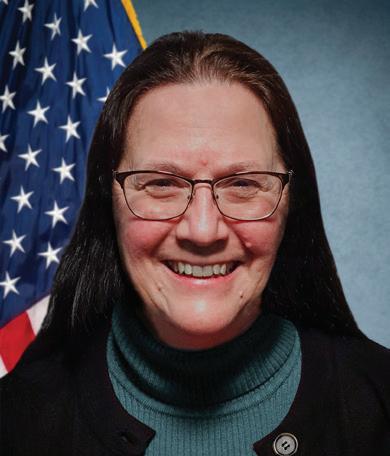
In all, the goal is to improve the policies to make them more transparent.
In addition, following up on a recommendation of the Department of Transportation Office of Inspector General (OIG), the FAA has established a Mental Health and Aviation Medical Clearances Rulemaking Committee (ARC) tasked with providing recommendations on breaking down any remaining barriers that discourage pilots and air traffic controllers from seeking mental health care.
The OIG conducted a study of the FAA’s approach to mental health at the behest of Congress after the March 24, 2015, Germanwings crash that was attributed to the deliberate actions of a copilot who suffered from severe depression.
The watchdog found that the FAA was comprehensive in its approach to evaluating mental health but barriers existed: namely, the willingness of pilots to come forward with their mental health issues.
The ARC has five major areas of focus:
factors that prevent pilots and controllers from reporting mental health issues; how the FAA should address a mental health diagnosis; steps the FAA can take to mitigate safety issues between disclosure of a mental health diagnosis and issuance of an aeromedical decision; how other aviation authorities address pilot/controller mental health issues; and development of mental health education programs.
Penny Giovanetti, FAA director of the medical specialties division, reiterated that the FAA is working to dispel myths about seeking help. “We have a huge task in front of us,” she said and stressed that pilots who demonstrate successful treatment will get their medical back. Pointing to the FAA’s review of its list of acceptable medications, she said the agency has already begun addressing low-risk conditions.
Further, the FAA has issued guides to AMEs with information on what she called “low-risk” situations. As part of that, the agency expanded what the AMEs could approve without needing to get another level of review with the agency, including certain cases involving ADHD. But Giovanetti also acknowledged the “elephant in the room:” the lengthy time it takes for special issuance and noted that cases have significantly jumped since the pandemic.
As for the problems surrounding working with the FAA, NTSB member Bruce Landsberg noted a lack of clarity around acceptable medications, the special issuance process, and the data in determining the approach to mental health issues.
“We need to be very transparent now about what the medical requirements are and the evaluation process and that needs to be shared in total with the AMEs,” Landsberg said. “I think we need to train and empower your AMEs because you’re never going to get enough money out of the government to sufficiently staff for this.
That’s the only way we’re going to get the timelines down to anything reasonable.”
Brent Blue, who has been a senior AME for more than 40 years and is a medical consultant to the Aircraft Owners and Pilots Association, agreed that the FAA should rely more on the AME system.
“Everyone’s interested in safety but when arduous and ineffective requirements discourage pilots from disclosing or seeking mental health treatment, those requirements are harmful and actually a threat to aviation safety,” Blue said, “and the lack of trust by the FAA medical division in its AMEs and the pilot’s local medical and psychological providers is one of the cruxes of the problem.”
Blue, who is HIMS certified, called the evaluation system broken and disagreed that stigma is a deterrent for pilots to seek help. It’s the fear of losing or not being able to obtain flying privileges.
And, he further stressed—and drawing

applause from the summit audience—“We keep talking…about this 0.1 percent that is denied, but that 0.1 percent does not include the people who give up in the middle of the process or the people who never start the process at all.”
He reviewed many of the processes for a mental health special issuance and noted that finding an approved psychiatrist along with an approved neuropsychologist is difficult since both are scarce.
Then there’s the time. “My absolute record: I just got somebody certified. It took him six years. Many of these criteria for passing the examinations are based on Freudian theories that have been replaced by modern brain chemistry.”
Once granted, pilots still have to go through an expensive and time-consuming reevaluation of “dubious value” from a safety standpoint. “Trust is key, and what I mean by that is trust in AMEs,” he stressed.
This trust takes its toll. Many AMEs are hesitant to furnish approvals, noted Quay Snyder, president and CEO of Virtual Flight Surgeons. “We still have AMEs who are reluctant to work with a pilot or to issue a certificate even if the condition is resolved,” Snyder said, and he called for additional AME education. Exacerbating all of this is the lack of aviation-savvy mental health professionals, he added, suggesting finding ways to encourage more to go into that discipline. Snyder also strongly promoted the effectiveness of peer counseling.
As for the FAA, Giovanetti told attendees that she had taken four pages of notes from the day-long NTSB summit to contemplate going forward. Then, she recalled a note she received thanking her for her help in getting a pilot back in the cockpit and said, “I won’t be happy until everybody who has an interaction with us over these issues feels the same way about it.” z

A panel of safety experts established to address a series of serious runway incursions at U.S. airports has called for “urgent action” to improve safety in the national airspace system (NAS).
Political gridlock, government shutdowns, inconsistent funding, air traffic controller shortages, and outdated technology are among the issues “rendering the current level of safety unsustainable,” the FAA’s NAS Safety Review Team (SRT) said in its final report. The confluence of these issues is eroding safety margins, according to the report.
“Generally, the (FAA) Air Traffic Organization employs robust policies, procedures, and programs to manage safety risk and enjoys a just safety culture,” the report stated. “However, the FAA continues to be asked to do more with less in an already strained system, and the series of serious incidents in early 2023 illuminate significant challenges to the provision and safety oversight of air traffic services.”
A major problem identified by the safety team includes a “dire shortage of air traffic controllers.” Overtime use is at an all-time high within the FAA; this leads to fatigue,
more absenteeism, and lower productivity. “The lack of an adequate workforce is a problem 40 years in the making,” according to the report. “It has a trickle-down effect that creates several threats to the flying public.”
Another daunting task, as recommended by the panel, is to provide more consistent funding to the agency and isolate it from government shutdowns.
Almost as a testament to the SRT’s concerns, the report came as Congress has been in the midst of a series of stopgap funding bills government-wide—including

for the FAA, as well as temporary extensions of the agency’s authorization. Lawmakers are facing deadlines this month to either continue these temporary measures or to agree upon long-term FAA reauthorization and full fiscal year 2024 funding.
The independent SRT was formed in April 2023 as part of a multi-pronged effort the FAA had undertaken to delve into the spate of high-profile close calls. The events became so pressing that the acting administrator at the time, Billy Nolen, assembled a rare industry-wide safety summit in March 2023.
Led by former FAA Administrator Michael Huerta, the SRT also included Space Shuttle astronaut and former NASA administrator Charles Bolden, former National Transportation Safety Board chair Robert Sumwalt, former FAA chief operating officer David Grizzle, former National Air Traffic Controllers Association executive v-p Patricia Gilbert, and former Air Line Pilots Association president Tim Canoll.
Huerta, who served as FAA administrator under presidents Barack Obama and Donald Trump, told reporters, “There are no short-term easy fixes to address many of these challenges; addressing risk in the NAS requires the FAA, the administration, Congress, and others across the industry working together collaboratively.”
Huerta cautioned that progress would require significant patience, collaboration, and investment. “But I think it’s important to recognize that, for the most part, these are not silver bullets or quick fixes,” he said. “What it really requires is a concerted effort on the part of all stakeholders to work together to provide the resources and to provide what the agency needs to carry out its critical safety mission.”
The published report provides a roadmap for current FAA Administrator Michael Whitaker to make changes and improve the agency’s air traffic organization. Whitaker

What it really requires is a concerted efort on the part of all stakeholders to work together to provide the resources and to provide what the agency needs to carry out its critical safety mission.
— Michael Huerta former FAA Administrator
was confirmed by the U.S. Senate on Oct. 27, 2023. The administrator position was previously vacant for 18 months.
Whitaker served as the deputy FAA administrator from 2013 to 2016; he is no stranger to Washington D.C. or the agency. As the SRT’s report was published, he said, “Aviation is safe because we are continuously looking for ways to improve. The safety review team made some excellent recommendations, and we are adopting some of them immediately.” Whitaker continued by stating, “We appreciate the team’s time and expertise to help us pursue our goal of zero serious close calls.”
True to his word, with the ink barely dry on the report, Whitaker and the FAA have taken immediate action to address air traffic controller staffing levels by providing additional support to collegiate training initiatives, more training slots at the FAA Academy, advanced training
systems, and control tower simulators. Most importantly, the agency has taken steps to improve its safety culture by providing direct safety reporting from the Air Traffic Safety Oversight Service to the FAA administrator and aviation safety associate administrator. The safety panel identified this as a process integrity issue in its findings.
Before the SRT report was issued, the agency did preemptively take some action to reduce the risk of runway incursions, including $200 million in funding to reconfigure taxiways and improve runway lighting at several large and small airports. Additionally, the FAA issued a safety bulletin to cockpit crews and airlines stressing the need for vigilance during departure, arrival, and taxiing.
The safety review team’s final report contained 24 recommendations that are classified into four interrelated categories:
process integrity; staffing; facilities, equipment, and technology; and funding.
Several interrelated funding challenges, according to the safety panel, negatively affect the FAA’s ability to deliver critical air traffic services in an efficient and timely manner to the industry and the traveling public. The panel found that inadequate and inconsistent funding issues are impacting everything from staffing to facilities and affect nearly every other issue at the agency. The experts stress that aviation is still safe, but efficiency is suffering and making the system “unsustainable over the long-term.”
The solution, according to the safety team, not only involves more money but more consistent funding to the agency, especially when faced with government shutdowns. In recent years, Congress has increased FAA funding, but much of it has gone toward airport improvements and not necessarily toward flight safety.
Primary funding for the FAA is through the Airport and Airway Trust Fund (AATF), which receives revenues from excise taxes paid by NAS users. The main contributors are taxes collected on airline passenger tickets, air cargo waybills, and aviation fuel purchases. Revenues deposited in the AATF are subject to congressional appropriations and are included in the federal budget. In addition to the AATF, FAA operations are supported by a general fund that traditionally is a small fraction of the contributions from the AATF.
The SRT argues that revamping how the FAA’s primary funding source (the AATF) collects and distributes revenue is necessary. As an example, AATF tax rates have not been updated since 1990. Likewise, there has been a significant evolution in aviation business models; AATF does not collect excise taxes from commercial space, UAS, or advanced mobility operators. In addition, ancillary airline fees, such as those charged for checked baggage, ticket
changes, and on-board food sales, are not subject to the tax.
The most pressing issue related to the AATF’s output is that it is still subject to appropriations and to federal budgetary caps on government expenditures despite, according to the report, “being collected from, and intended for, aviation.”
This stop-and-start process in Congress has resulted in the disruption of critical activities, notably the hiring and training of air trafc controllers. It has also slowed down the implementation of key technology modernization programs...
One solution, according to the safety team, is to have Congress exempt appropriations funded by the AATF for the FAA facilities and equipment and operations accounts from federal budgetary caps up to the amount of revenue received into the AATF the previous year. The operations account funds day-to-day work and should rely on aviation user fees and become a “self-sustaining government service.” Updating the funding sources for the AATF would ensure that the FAA is not affected by government shutdowns.
The recurring gridlock on Capitol Hill— including in recent months surrounding appropriations and reauthorization—negatively affects FAA employees and aviation safety. The recurring government gridlock is making it harder for the FAA to do its
job, and if this continues, the safety panel warns, it could have long-term repercussions and increased safety risks.
The report states, “This stop-and-start process in Congress has resulted in the disruption of critical activities, notably the hiring and training of air traffic controllers. It has also slowed down the implementation of key technology modernization programs, delayed thousands of flights, and held up billions of dollars of airport infrastructure investments.” According to the safety experts, “This situation makes it extremely difficult for the FAA to effectively conduct long-term business planning and execution.”
Case in point, air traffic controller staffing has been significantly impacted by government shutdowns. In 2013, sequestration cuts and a 16-day shutdown suspended hiring for 10 months. Training at the FAA Academy was suspended during the shutdown.
In 2018 and 2019, a 35-day partial government shutdown led to the suspension of air traffic controller hiring and training. Combined with the pandemic, which closed the FAA Academy for four months, hiring and training for approximately two of the last 10 years has been lost, according to the report. “These hiring slots and positions (nearly 1,600 controllers) cannot be recaptured.”
Staffing made up nearly half of the safety review team’s recommendations. Today, the FAA has 1,000 fewer top-tier certified professional controllers (CPCs) than it had in 2012. This, according to the report, reflects no change in the number of air traffic facilities and an “increased complexity of the airspace.”
The panel found this to be problematic: “If unaddressed, the Air Traffic Organization (ATO) will be unable to maintain current capacity, let alone expand and modernize the system. The understaffing that currently exists within the ATO places

additional strain on the system, further eroding the margin of safety and increasing risks.”
The staffing issue is partially attributed to a massive air traffic controller retirement wave that began in 2005. These individuals were mostly hired after the PATCO air traffic controller strike in 1981. This was most recently exacerbated by the previously mentioned government shutdowns and global pandemic as well as an increase in attrition in 2021 and 2022.
The single FAA Academy in Oklahoma City has created a bottleneck in training enough controllers to address the shortage. The safety team has recommended increasing the throughput at the training center by expanding the capacity in Oklahoma City, adding more instructors, and revamping the coursework to eliminate outdated and unnecessary material. Administrator Whitaker and some lawmakers have suggested adding a second facility.
Adding to the complexities of training new controllers is a failure rate of 30 percent at the academy. The safety team found that this contributes to the
lower-than-ideal throughput and recommends, “The FAA should examine both how it selects candidates and the training they receive and make changes to help reduce the washout rate.”
Certain efforts, such as the Air Traffic Collegiate Training Initiative program, seem to hold some promise for increasing the number of qualified controller applicants. The report suggests that CPC training timelines could be reduced by 30 percent without reducing the quality of instruction if the academy expands the use of simulators and other state-of-the-art training devices.
The report also found, “The age and condition of FAA facilities and equipment are elevating system risk to unsustainable levels, even before considering losses in efficiency from outdated technology.”
As an example, surveillance radars in the U.S. have an average age greater than 30 years. There are more than 500 of these systems in operation at airports and en route locations. Aging infrastructure
impacts nearly every air traffic control system in the FAA’s inventory. Many systems are nearing obsolescence since many manufacturers of the original equipment no longer exist or support those legacy systems. Technicians within the FAA are retiring and do not pass along knowledge to younger employees. According to the report, the equipment replacement backlog is valued at $5.3 billion.
The safety team also identified other examples of aging infrastructure and under-utilization of new technology as two major facilities-related issues. According to the report, the ADS-B equipage effort fell short for several reasons. As an example, “The military in particular did not equip all of its aircraft.” This prevents the FAA from decommissioning older systems, which adds to the cost with minimal user benefit.
Alarmingly, investments in overhauling FAA technology have worsened the agency’s technology, according to the safety panel. “Newer systems are layered on top of older systems, and few old systems have been decommissioned or replaced.”
In many respects, the obsolescence of critical operational facilities is even more extreme. According to the report, the FAA’s 21 air route traffic control centers (ARTCCs), which control en-route aircraft, are in buildings that are between 56 and 64 years old. If one ARTCC was replaced every other year beginning in 2025, some facilities would be over 100 years old before being replaced. Building age is not trivial; low-tech issues such as water leaks and broken HVAC systems can cause a facility to go “ATC-zero,” meaning there are no ATC services.
The FAA, in response to the SRT’s recommendations, said: “The independent safety review team completed a thorough assessment and presented its recommendations to the FAA, to enhance safety and reliability in the NAS. Accordingly, the FAA will review internal safety processes, staffing levels, as well as needs for the facilities and equipment and how the agency’s air traffic budget is funded.” z
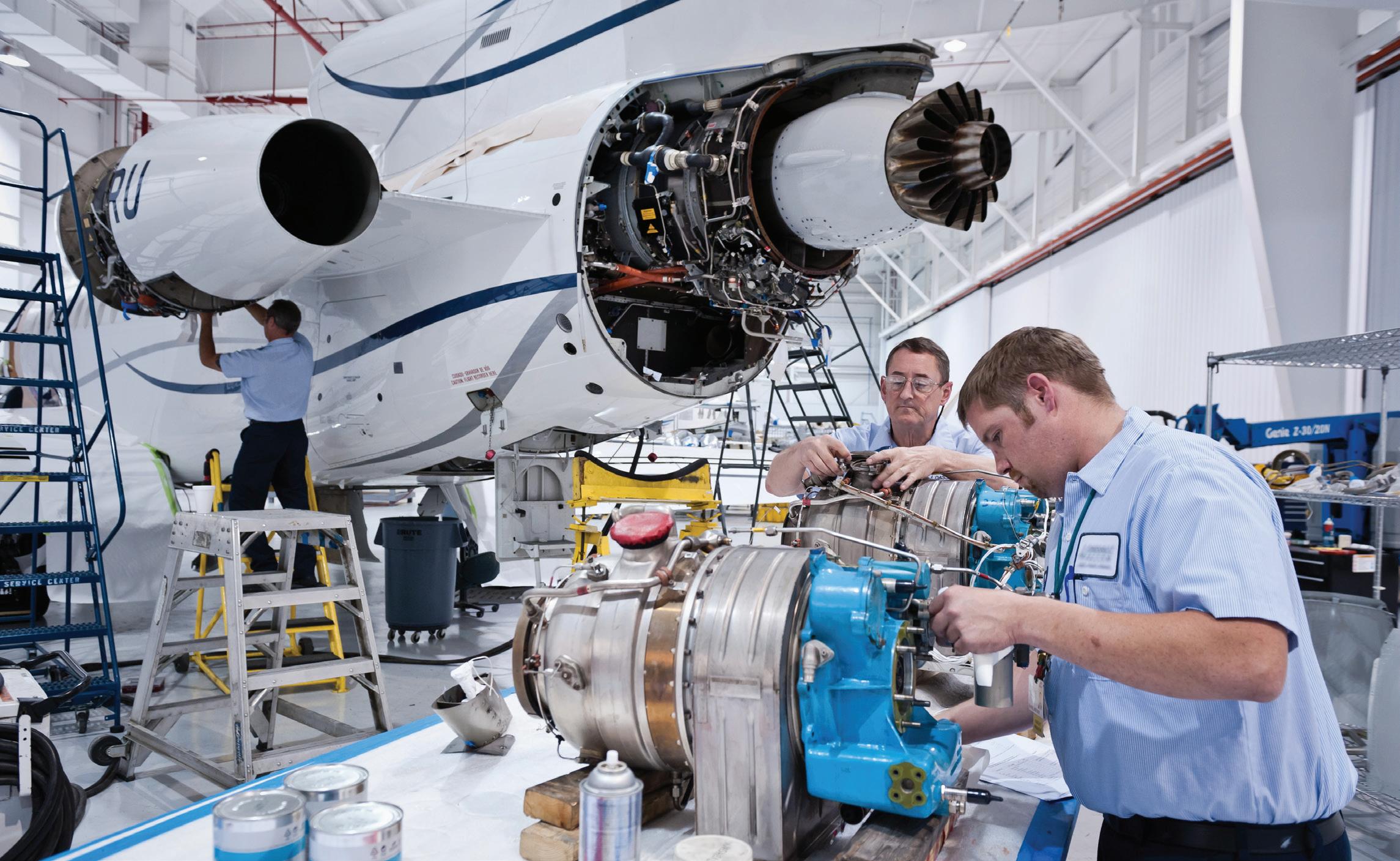
The personnel shortage is particularly acute for business aviation MROs, with airlines and other industries ofering mechanics attractive incentives.
When it comes to describing the workforce situation, General Aviation Manufacturers Association (GAMA) president and CEO Pete Bunce is plaintive: “Our industry is sucking wind.”
The industry has struggled to fill factory floors, engineering desks, and especially maintenance shops. And, while the pipeline is better, pilot positions remain a concern.
For the FBOs, the strain has eased a bit, said Steve Berry, v-p of safety and education for the National Air Transportation Association (NATA). “When it comes to line service, customer service
representatives, the more traditional FBO positions, the hiring seems to have lightened a bit,” Berry said, noting that applications are up an estimated 10 percent. Even so, with increased traffic, FBOs still feel a pinch. “We’re not quite back to where we were pre-pandemic levels.”
Bunce points to numerous reasons for the workforce pains, starting with the fundamental changes that occurred thanks to the Covid pandemic. “Our society has changed pretty dramatically since Covid,” he said, with the sheer number of people available to the industry shrinking as many workers have retired or moved on to other disciplines.
Further, people transitioned into remote roles during the pandemic, and most aviation positions must be onsite. “People have to come to the office and go to work each day, whether they’re doing maintenance or manufacturing,” Bunce said, noting that this has been a disincentive to attracting new people.
Workforce pain points are felt in both commercial and private aviation, and even in aerospace. But as larger airlines feel squeezed, there is a trickle-down effect.
When it comes down to it, Bunce added, “We’re the competition.” Business aviation has found competition with airlines for
pilots and mechanics. But beyond that, the sector, and the industry at large, also are competing with a range of other industries for workers.
Industry leaders have long discussed aerospace engineers graduating from universities such as Embry-Riddle Aeronautical University only to get snatched up by “cooler” career paths such as those at Disney. Factory workers now are returning to auto and other manufacturers that have come up with more lucrative contracts.
In recent years, FBOs found themselves losing candidates to the fast-food chains that raised their entry-level salaries. Now it’s the Amazons and the big box stores, added Alan Stephens, v-p of regulatory affairs for NATA.
As for pilots, they are getting trained and gaining experience in business aviation and then getting quickly lured away by high-salaried positions at the airlines as those carriers look to fill their pipelines. This makes the pipeline fill all the more difficult in business aviation.
And everyone is struggling to find maintenance technicians. As with pilots, this creates a pinch on business aviation. Companies may help students go through the technical schools, but once they are A&Ps, “they get poached by the airlines with big signing bonuses and everything else,” Bunce said. “We’re working that issue hard.”
“Maintenance is where we’re seeing the biggest bottleneck,” agreed NATA’s Berry, who noted that one member cited three MROs on its field that are having to restrict business because of a technician shortage. “They’re having to turn people away because they simply do not have the staff to maintain and keep up with it,” Berry said. “We’re going to go from an issue where there’s not enough pilots to keep planes in the sky to there’s not enough mechanics to get them off the ground.”
From the corporate standpoint, Sheryl Barden, president and CEO of Aviation Personnel International, said, “I’m not seeing it getting any better in our segment of
the industry.” This is true for both pilots and mechanics.
“On the pilot side, the airline pull is so strong. We used to fill the pipeline with younger people starting as a first officer or flying charter and then moving up [into corporate jobs]. If we’re not able to bring those people in because there’s so much airline pull, then how are we going to fill for the future?”
 BARDEN PRESIDENT AND CEO OF AVIATION PERSONNEL INTERNATIONAL
BARDEN PRESIDENT AND CEO OF AVIATION PERSONNEL INTERNATIONAL
Flight schools are staying busy, Barden maintained. “We’re making more pilots as a country,” she said, “but we haven’t started to fill the pipeline yet.”
The process is long for airlines, with pilots needing a minimum of 1,500 hours, but also for corporate flight departments, many of which have standards at least the equivalent of the airlines.
Bunce also noted an uptick in flight schools. “We all know the training centers are pumping out a lot of people.”
However, many of those are ab initio through contracts with airlines, underscoring the ultimate career trajectories for those students.
According to the latest available FAA data (for 2022) as of AIN ’s magazine deadline, student pilot certificates have more than doubled over the past decade—from 120,285 in 2013 to 280,582 in 2022. ATP holders have also increased over that period, from 149,824 to 166,738.
However, at the same time, the number holding only commercial certificates has dipped from 108,214 to 104,498. Meanwhile, statistics surrounding maintenance certificates are more concerning, dropping from 338,844 in 2023 to 320,042 in 2022.
Workforce throughout the industry has been such a worry over the past decade that Congress commissioned a committee—the Youth Access to American Jobs in Aviation Task Force—to provide recommendations and strategies to encourage students to pursue studies and careers in aviation and aerospace.
Citing Boeing and Airbus forecasts, the task force noted that before the pandemic, the aviation industry was facing “a 20-year stretch of unprecedented need for qualified employees.”
The task force further noted that consultancy Oliver Wyman in 2022 followed with a finding that the tight labor market extends beyond flight crews. “It also reflects sta ffi ng problems in the ranks of ground staff, baggage handlers, air traffic controllers, TSA agents, and vendors…A stunning 85 percent of senior executives in Oliver Wyman’s annual maintenance, repair, and overhaul survey said that finding new hires was their biggest challenge.”
McKinsey and Company painted an equally dim picture, according to the task force, saying, “an industry with 50,000 unfilled positions is losing staff at a rate of six percent higher than other sectors and at the same time is losing in recruiting new talent due to factors including a failure to compete with tech companies’ pay rates that, for example, typically run twice as high for software engineers.”
These pressures will only worsen, McKinsey contended, as the burgeoning advanced air mobility market increases.
The question is how to fill the pipelines and train the workforce so there is a steady replenishment. The task force pointed to McKinsey’s contention that identified an urgent need for a new approach to attracting and retaining a workforce.
Key to success is expanding the available pool, the task force maintained. While not unique to aviation, the industry had been “slower to understand and act upon creating a more equitable and inclusive workforce,” the task force said.
This includes working to draw in more women and people of color. “Outreach to underrepresented groups is paramount,” the task force said.
Ultimately, the task force came up with recommendations to create a sustained pipeline that fall into four major categories: engage young people at an early age (“waiting until high school is simply too late given that awareness [and] financial support are two of the significant barriers”); ensure easy access to resources for caregivers, teachers, guidance counselors, and young people; elevate collaboration
with a connected career pathway to collectively draw students into aviation and aerospace; and find sustained funding.
The task force conceded that the last category is likely the most difficult, but stressed: “There is no one solution [that will] solve our workforce challenges, particularly where the lack of representation from women and minorities is concerned. It must be—and will be—a multi-solution approach


The 2024 European Business Aviation Convention & Exhibition (EBACE2024), Europe’s premier on-demand aircraft and advanced air mobility event is the place where you will experience, enhance and help shape the future of business aviation. Save the date and make plans to join us in Geneva!
LEARN MORE | ebace.aero


where some opportunities will happen more quickly with some having greater impact.”
While funding may be the most difficult to crack, Bunce and Barden pointed to recommendations surrounding collaboration to provide a connected career pathway as an imperative for business aviation to develop a sustained flow of talent.
They cited numerous initiatives underway to bring in new talent. Aviation trailblazer and advocate Barrington Irving partnered with industry and community organizations to launch a professional and technical training center in South Florida to help develop local, national, and international students in business aviation disciplines.
Famed aerobatic show pilot Sean Tucker teamed up with local officials in Salinas, California, to launch the Bob Hoover Academy to offer flight and other technical training.
There are a myriad of other programs from after-school and local clubs to museums and even large entities such as NASA and the U.S. Air Force.
And then a multitude of companies have started to partner with technical schools to create internships and facilitate apprenticeships. In the maintenance arena, many of the major providers—such as Duncan Aviation, West Star Aviation, and Constant Aviation—recognized early on the labor shortage potential and established such programs.
pilots with mentorships to help develop them. “The departments that are doing that are making huge investments of time and energy.” This requires three or four pilots per every one low-time pilot, she said.
Barden also stressed the importance of internships. “They really are the way to help this next generation uncover all of the very amazing and cool things that are part of business aviation,” she said. “Whether it’s an internship in maintenance or whether it’s an internship in the flight department at any level, pilot scheduling, the experience and the exposure is outstanding.”
Barden contends that the industry needs a major, well-synchronized marketing campaign. The “Holy Grail” is to have a coordinated industrywide effort to take the message of business aviation to prospective talent in a well-orchestrated, strategic way.
“That story is still very much being done on a very grassroots basis [in business aviation],” Barden said, highlighting efforts of the majors such as United Airlines, American Airlines, and Delta Air Lines.
“They’re all out every day telling that story at the Embry-Riddles, the UNDs [University of North Dakota], the Auburns, and the Purdues, and they’re telling it with a wellhoned marketing strategy. We are still a group of small, more grassroots messages that are not fully coordinated.”

Meanwhile, other operations such as Jet Aviation have established relationships with universities to fill its needs, the company said. ACI Jet even helped build a new A&P school.
The same holds true with flight departments, Barden noted. “We have some flight departments who are doing a fabulous job of bringing in pilots much earlier in their career.”
These organizations create what she likens to an ab initio program for corporate
These lure not only prospective new workers but, in an era of social media, help with outreach.
“This generation coming out, they love to share their experiences. So, with every positive internship experience you have, we’ll get a fan who Snapchats and Instagrams about it and starts to bring awareness.”
But while all these programs, initiatives, internships, and apprenticeships draw in people, Barden cautions, “It’s not mass production.”
NATA’s Stephens agreed. He noted that, to help coordinate efforts for maintenance shops, NATA worked with its maintenance committee to create its Aviation Apprenticeship Tracking Tool to help them develop “testready and well-documented” technician applicants.
While reactions have been favorable to the apprenticeship tool, he stressed, “That is just one piece of it. If we can get some of the aviation community together, especially in general aviation, to incentivize people to come into maintenance, to get that hook in, now you have a plan to go from here to there.”
Bunce further agreed with this sentiment and, in fact, is contemplating how to better coordinate these efforts. He noted that GAMA is exploring ways to build a network that ties different programs together around the country. On the maintenance side, “What are the apprentice type of programs that can help bring someone through to their A&P while they’re making money working in the industry?”

















GAMA hopes to explore tying together best practices and resources of what is available. “Ideally, we will have a continuum,” Bunce said. While still a concept, he cited as an example a young person who gets a flight through the Experimental Aircraft Association’s Young Eagles program, and their interest is sparked. Then, their parents, educators, and others are given resources about pathways, schools with programs, and communities that can support their goals. Such a network could point to schools that incorporate the Aircraft Owners and Pilots Association’s STEM curriculum.
“We’re trying to network all of those as well as programs at the museums,” he said. For the engineering side, such a network could pull together initiatives like what NASA does involving young people along with those transitioning military personnel and local people looking for new avenues.
“Here are all these different components and modules that industry can get,” Bunce said. “But what is lacking is something to stitch all of these good programs together and share the wealth and knowledge. That’s what we would like to create.”
Once the recruitment side is addressed, Barden said, then it falls on retention. Wages are a key piece, she noted.
NATA’s Stephens pointed out that compensation has long been an issue. In the mid-1990s, he served as a maintenance officer commander in the National Guard in Memphis. FedEx had just picked up a postal contract and hired away nearly two dozen of its full-time maintenance employees, offering salaries of $35 per hour. The Guard’s top salary was $22 an hour. “So, anybody that was trained that was good, they were going over, and rightfully.”
The difference between then and now, he added,is that “the pipeline was charged up...Now, the question is, do we have the [maintenance technical] schools being

filled? Anecdotal information we’ve been getting is no.”
“Obviously, you are going to have to raise wages to compete for this limited labor supply,” Bunce said. But he added, “It’s happening organically.”
In fact, NBAA’s 2023 compensation survey, which involved data on 3,442 flight department employees, showed a 12 percent increase in pilot salaries with the average captain receiving a long-term retention bonus of around $27,000 a year.
But there are other incentives to draw and retain workers, from playing up the industry’s own “cool” factor to promoting environmentalism. To that end, companies such as Jet Aviation said they are altering their training to fold in environmentalism.
Others have turned to new technologies for training, such as the use of virtual reality for pilot training at Embry-Riddle. But the flight schools are not unique to that. Signature Aviation is planning to test out the use of virtual reality training in basic areas such as wing walking and marshaling.
“Attracting great talent is always a challenge for any company, regardless of industry, and what matters to candidates continues to evolve,” said Amy Alexy, chief people officer at Signature Aviation. “That
is why we’ve worked hard to provide a more seamless candidate experience and offer competitive benefits. We want them to feel as if they’ve always been a part of the Signature family with a great onboarding and newhire training experience. For example, we’re excited to soon pilot virtual reality to make basic operations training more interactive and engaging.”
To boost many of the educational efforts, Congress in the 2018 FAA reauthorization bill created a grant program that provides $25,000 to $500,000 to entities that foster the development of pilots and maintenance technicians. While sunsetting last year, the FAA reauthorization bill that has been under consideration in the House and Senate (still not finalized as of the magazine deadline) would renew the program and expand those grants to manufacturing.
Bunce said GAMA was watching that provision closely, among the many initiatives that the association and its counterparts have undertaken.
“We’re trying to come up with any ideas we can to look at because, when you look at it demographically and age-wise, we’ve got to recapitalize this workforce.” z

For over 50 years, AIN has provided market-leading coverage of the most important airshows and conventions across the globe. Drive awareness and consideration with a 360-degree marketing plan including print (where available), newsletters, social and digital. Custom content opportunities are also available across all of our platforms.
February: *Singapore Airshow, *Heli-EXPO | March: Schedulers & Dispatchers, AEA | April: Sun n’ Fun, AERO Friedrichshafen | May: *EBACE, Aircraf Interiors Expo | July: *Farnborough Air Show, EAA Air Venture August: LABACE | October: *NBAA-BACE | December: *MEBAA

Learn more at: marketing.ainonline.com/airshows-conventions
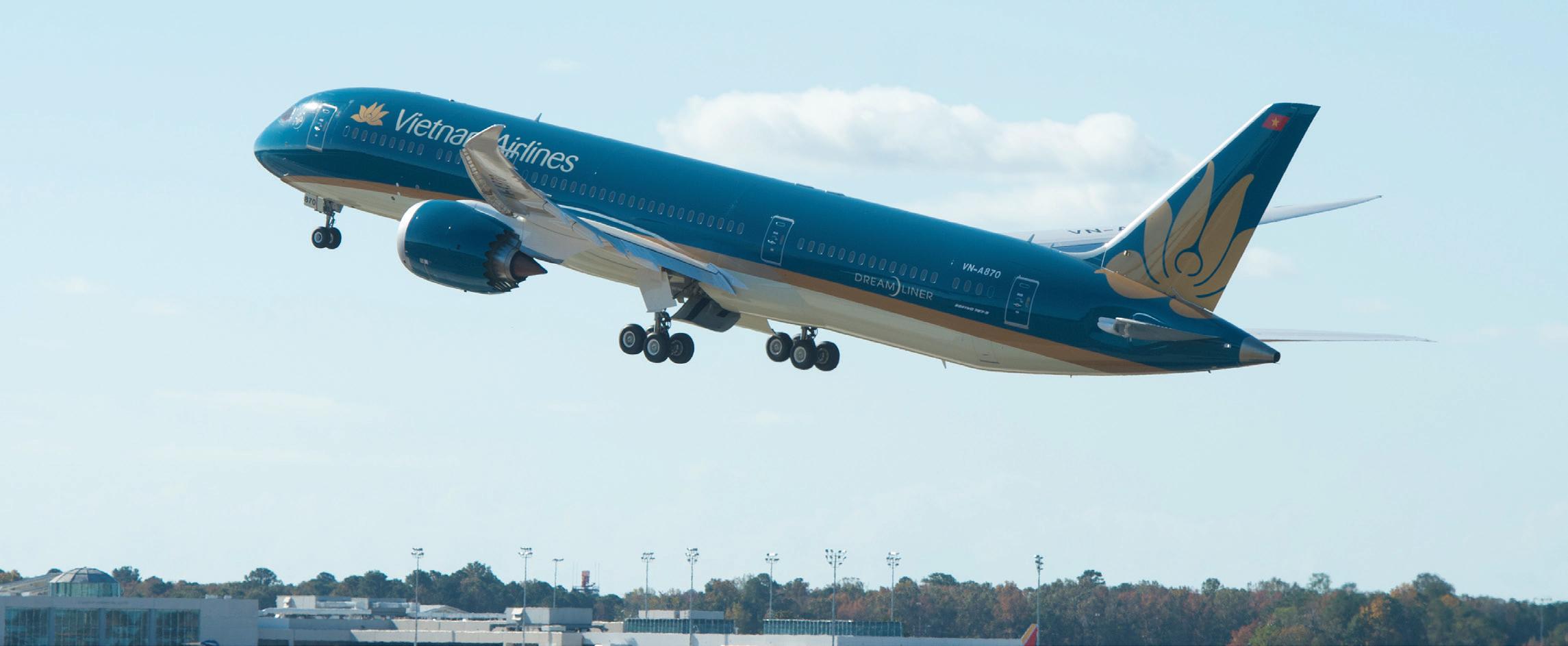
Now accounting for about 31 percent of the global fleet of commercial aircraft, the Asia-Pacific region already ranks as the largest market for the world’s airliner manufacturers. Even as parts of the region recover more slowly than the rest of the world from the economic effects of the Covid pandemic, the prospects for future growth appear bright given the size of its upwardly mobile population and the availability of lower-cost capital.
China saw the effects of Covid result in the steepest declines in traffic in the region and among the slowest to recover from the pandemic. According to the International Air Transport Association (IATA), the country’s international traffic volume remains some 60 percent below pre-2019 levels. Still, according to IATA vice president of Asia-Pacific Philip
Goh, China’s trajectory will account for a major piece of the wider region’s recovery.
“Pre-Covid, China was a major source of foreign visitors to many countries in the Asia-Pacific,” Goh told AIN. “In some cases, Chinese travelers accounted for as much as 20 to 30 percent of total visitor arrivals. While China reopened borders early in 2023, the Chinese government only allowed the full resumption of group outbound tours from China during the second half of [the year]. Hence, it will take time before we see the benefits of Chinese visitors traveling in large numbers.”
Oliver Wyman consultancy partner Andrei Grskovic noted that the People’s Republic accounts for 43 percent of the region’s fleet and that the country generated 60 percent of incremental fleet growth over the past two decades.
Grskovic attributes the comparatively slow
recovery of the Asia-Pacific region largely to the late reopening of China and what he calls draconian country-specific border closures in places such as Singapore.
As a result, Asia-Pacific air traffic has recovered to about 90 percent of preCovid levels, due largely to strong domestic demand in China and India. Overall, Oliver Wyman sees a long-term return to 6 to 8 percent annual growth thanks to population growth, disposable income growth, improved airport infrastructure, and more affordable travel from startups and low-cost carriers.
While more airliners reside in China than in any other country in the region, Indian carriers have accumulated an order backlog of 1,800 airplanes, the largest in the Asia-Pacific bloc.
Recognizing the cultivation of supply chains and partnerships in those countries as almost obligatory, both Airbus and
Boeing must build on the establishment of what he called “commercial offsets.”
Boeing for years has benefitted from projects such as the 737 completion and delivery center it operates with Comac in Zhoushan, a composite parts factory in Tianjin, and a service center and training facility in Shanghai. However, geopolitical tensions over Taiwan, for example, have made it more difficult to expand on those relationships in China, where orders have slowed to a trickle for the U.S. company.
Airbus appears to have taken full advantage of the opening left by soured U.S.China relations and last April agreed to open a second A320 assembly line in Tianjin, where it has operated a single line under a joint venture with AVIC since 2008. The deal paid immediate dividends, accompanying an order for 150 A320-family jets and 15 A350-900 widebodies.
Now, Airbus has set its sights on further developing its supply chain in India, noted Grskovic.
“But what Airbus has been really strategic about over the past 10, even 15 years, is moving their supply chain in terms of commercial offsets into those fast-growing countries,” he explained. “But India is now their number-one supply chain initiative, from a lowcost perspective. You’re seeing a significant amount of investment in the supply chain.”
Perhaps not coincidentally, Airbus has seen runaway sales success with Indian low-fare airlines such as IndiGo, whose A320 order backlog stands at 1,330 after a 500-unit deal signed last June. Boeing, too, has accumulated a substantial backlog in India, most notably with Air India, which during last year’s Paris Air Show ordered 190 of 737 Max narrowbodies, 20 787 Dreamliners, and 10 777X widebodies with options for 50 Max jets and 20 Dreamliners.
Overall, the number of firm orders placed by carriers in the Asia-Pacific region stands at nearly 6,000, which represents about 40 percent of the global backlog. In the
decade prior to the onset of Covid, the region accounted for 42 percent of cumulative global production. According to Oliver Wyman, that share looks likely to hold steady if not increase.
Beneficiaries also include Brazil’s Embraer and Franco-Italian turboprop maker ATR, both of which have virtually cornered their respective market segments in the region. In Embraer’s case, 194 aircraft operate with 15 airlines, including four carriers from China, two from Mongolia, and nine throughout the rest of the region.
Flying 38 E190s and 20 E195s, China’s Tianjin Airlines ranks as the biggest Embraer operator in the region, followed closely by Japan’s J-Air, which flies 18 E170s and 14 E190s, and Australia’s Alliance Air, which plans to add 28 used E-Jets to its fleet of 35 E190s.
In Australia, the first generation E190 has experienced a renaissance as operators continue to seek near-term replacements for end-of-life Fokker 70/100s, BAe 146s, and Boeing 717s. In Japan, more than 30 turboprops and regional jets will reach at least 15 years of age within two years. E-Jets stand to address downgauging away from Boeing and Airbus narrowbodies.
In high-growth markets such as Vietnam, Indonesia, and India, airline fleet decisions traditionally have favored narrowbody types carrying more than 200 seats. But, Embraer insists the evolving fleet mix in those regions has created an acute capacity gap between the 70-seat turboprops and large narrowbodies ideally filled by E195-E2s.
That trend could also bode well for ATR, which became the only Western manufacturer producing new passenger aircraft in the 30- to 70-seat capacity segment when De Havilland of Canada halted production of the Dash 8-400 in 2022.
Now counting more than 500 of the aircraft in service in the region, the European company has dominated the Asia-Pacific market. According to ATR, turboprops flying routes shorter than 500 km account for 41 percent of the region’s flights, leaving
ATR in an ideal position to further exploit its near monopoly in the sector.
For example, ATR recently highlighted South Korea’s potential for ATR 72 proliferation, targeting deliveries of between 25 and 30 of the turboprops to Korean operators within seven years.
“Korea has many under-utilized domestic airports, and scheduled domestic flights are mainly north-south,” explained ATR head of commercial for Asia-Pacific JeanPierre Clercin. “ATR sees an opportunity to develop east-west routes.”
In India, turboprops played an important role in gradually redeploying capacity amid the market’s recovery from Covid. Airlines placed ATRs on routes previously served with single-aisle jets. Of the roughly 800 passenger aircraft in operation in the country, ATRs account for 66, flown by Alliance Air and Indigo.
The fastest-growing air transport market in the world, India has seen its commercial fleet double in size over the past 10 years. Meanwhile, the ATR fleet increased by 120 percent and the number of domestic routes has nearly tripled.
India—along with China, Japan, and Indonesia—already ranks among the top 15 largest passenger markets in the world, and IATA’s Goh pointed to Thailand and Vietnam as showing the most potential to join that list. But infrastructure stands among the most prominent barriers to that growth.
“Although we are seeing expansion plans being proposed at some airports, these are not moving forward as quickly as we would like,” said Goh. “We would like to see governments and airports across the region adopt integrated and inclusive infrastructure planning.”
Goh also called for more cooperation between entities responsible for airport development and the airlines. “It is important to engage airlines when it comes to new airport capacity,” he said. “There is a general lack of transparency, which makes forward planning for airlines difficult.” z

The resurgent offshore energy industry is driving fresh demand for Sikorsky’s largest civil helicopter, the S-92A Helibus.
Sikorsky delivered just four S-92s in 2022 and three last year. But three more are on the assembly line at the company’s West Palm Beach, Florida facility, and the company is in the final stages of negotiations for a block of 14 new-build helicopters for delivery in 2025 and 2026.
These helicopters will be delivered in the upgraded “A+” configuration that includes the new Phase IV main gearbox and a menu of choices including uprated
GE CT7-8A6 engines that offer better high/ hot performance. The new gearbox uses a supplemental oil pump and additional oil lines to reuse main gearbox oil that is accumulated in a lower sump, in the event of primary lubrication failure. The A+ kits will be available for retrofit.
Leon Silva , Sikorsky v-p for commercial business, told AIN that the helicopters will be produced at a facility to be announced and not West Palm. Production shifted to West Palm after Sikorsky closed its Coatesville, Pennsylvania plant in 2022. Silva said Sikorsky has evaluated “a large number of
options” for production and does have a specific place in mind but is not ready to announce it. The helicopter will be produced in the U.S.
Silva pointed out that Sikorsky has assembled the S-92 in four different locales since production commenced in 2005 and that moving production is not overly difficult due to the helicopter’s architecture of putting it together from “very large subassemblies.”
Sikorsky has made “good progress” toward certification of the A+ kits, Silva said. The company anticipates receiving
FAA approval in 2025. Most of the certification work centered around the Phase IV gearbox “and improvements associated with that,” he added.
“The majority of the site testing has been completed, and we have collected the data. We’re now organizing those reports and coordinating with the FAA for certification. We made a lot of nice progress last year and have it [the A+ program] fully funded and going full speed this year,” he said.
Sikorsky’s Matrix autonomy system could be added to the A+ at some point in the future, but Silva said that, for the present, Sikorsky is focused on “solving today’s challenges and not coming off like we are trying to distract anybody with some fancy technology.”
But Sikorsky has looked at incorporating Matrix into the S-92, and “we are having some interesting conversations with potential partners in order to develop a certification path.” He said Matrix will significantly reduce pilot workload. “We think customers are likely to be interested in that,” he remarked, adding that while “we don’t have any specific plans right now for that development, we are definitely having discussions and exploring potential tasks.”
For the moment, “today’s challenges” are focused on keeping the existing fleet of S-92s in the air. Nearly two-thirds of the 300-strong S-92 fleet serves the offshore oil and gas industry, and the majority of those are owned by leasing companies, with AerCap unit Milestone Aviation being the fleet leader at more than 80.
While Sikorsky has made progress in keeping customers supplied with parts and assemblies, Silva admits that it remains a problem. Silva said the lead time for a new S-92 main gearbox is two and a half years, but often customers can accept a refurbishment as opposed to a replacement.
That said, Sikorsky boosted gearbox output by 40 percent in 2023 compared with 2022, delivering 39. It anticipates increasing that number by 25 percent in 2024 and being caught up with the main gearbox
backlog, as well as future anticipated needs, by year-end. Silva said Sikorsky produced a record number of gearbox housings in 2023, a component that requires highly complex fabrication.
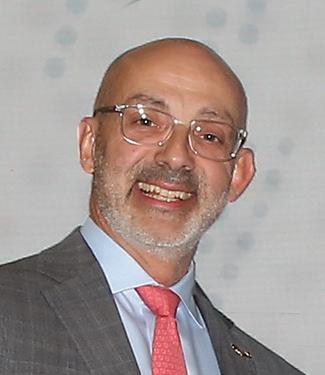
LEON SILVA
SIKORSKY V-P FOR COMMERCIAL BUSINESS
We’re trying to work through [supply chain issues] and they are improving slowly... Most of these parts have long lead times, and it takes time to recover from that.
Record S-92 post-Covid flight activity created a “perfect storm” for the OEM, with the helicopters flying record hours at a greater tempo than anticipated, Silva said. “They’re more active than ever before. While that validates the quality and strength of the design,” it also creates supply chain issues.
“We are trying to work through them, and they are improving slowly. Time is the biggest challenge. Most of these parts have long lead times, and it takes time to recover from that.”
During Covid, one in five S-92s were parked, but that didn’t last long. “That started the [parts] challenge,” Silva said. “We saw about 40 aircraft that were in
storage being pulled out and put back into service.” He noted that when aircraft were put into storage, forward maintenance was not always a priority.
“In some cases, people weren’t too concerned about updating their [gear] boxes and so forth. So some of those aircraft—as soon as they got pulled out and put back into service—required additional attention. So demand for parts, specifically gearboxes, really spiked. That’s been our big challenge,” Silva said, adding that it was in Sikorsky’s best interest to move as quickly as possible to satisfy parts demand.
“It’s a critical issue for the operator and for us. Our business is aligned with the customer because of the way we support them. A large number of these aircraft are on our hourly power program. We don’t make money if they are not flying, so we are highly incentivized.”
Meanwhile, pressure from increased flight hours has led to the scrapping of some aircraft for parts as others bump up against the 20-year maximum age limit specified by some offshore customers or the 30,000-hour life limit of the aircraft. While it could be technically possible to zero-time remanufacture the aircraft to deal with these limits, Silva said it is not economically feasible. “It’s difficult to rationalize because it would require a lot of additional testing and certification on the aircraft to get there.”
Despite the S-92’s current low-rate production and continuing spares backlog, Silva wants to reemphasize parent Lockheed Martin’s commitment to Sikorsky’s civil business. “It’s a strong market for us and would make absolutely no sense not to pursue it. It’s an important piece of our business, and we like being in that business.” z

Modern Aviation is now the sole aviation services provider at Fernando Luis Ribas Dominicci/Isla Grande Airport (TJIG) in San Juan, Puerto Rico, after it acquired rival Puerto Rico FBO. In 2021, Modern purchased the Million Air franchisee at TJIG, giving the growing FBO chain its first foothold in the Caribbean. This latest move will see the consolidation of the two locations.
Modern recently finished the first of two hangars it is constructing at TJIG, which will add 48,000 sq ft of aircraft shelter when the second is completed by the end of the first quarter of the year. In its latest purchase, Modern gained an additional 40,000 sq ft of hangar space and offices, which will bring it to a total of more than 150,000 sq ft.
The Reading (Pennsylvania) Regional Airport Authority has taken over as the aviation service provider at Reading Regional Airport/General Carl A. Spaatz Field (KRDG). Last year, the authority agreed to purchase the two existing FBOs on the field with plans to merge them into one business now known as Reading Aviation.
Previously home to Millennium Aviation, the FBO’s 18,000-sq-ft terminal offers passenger and pilot lounges, a 16-seat conference room, 1,000 sq ft of office space, crew cars, laundry and dishwashing service, and an on-site restaurant. Over the next two years, the rebranded facility will undergo an upgrade that will add snooze rooms, more conference/meeting space, and offices for customer use.
In addition, the airport now also controls more than 70,000 sq ft of hangar space capable of sheltering aircraft up to a Dassault Falcon 900. Besides the consolidation and name change, the FBO has also switched fuel providers to join the Avfuel dealer network.
Rapidly expanding FBO chain Aero Centers recently opened a facility at Spokane International Airport (KGEG) in Washington state, giving the airport two general aviation service providers.
The nearly four-acre, $10 million facility—which took nine months to build—features a 6,000-sq-ft terminal with passenger and pilot lounges, snooze room, showers, 12-seat conference room, concierge, business center, dishwashing service, and crew cars. Located on the east side of the field adjacent to the U.S. Customs office, it also offers courtesy transportation, vehicle ramp access, and 1,200 sq ft of office space.
To shelter aircraft up to a Bombardier Global 7500, the complex offers 27,000 sq ft of heated hangar space.
Aero Centers also operates the lone FBO at nearby Felts Field (KSFF). Over the past year, the company has added four locations. Its next—at Wyoming’s Casper–Natrona County International Airport (KCPR)—is expected to open by April.
With the opening of the Beacon Air Group facility, aircraft operators visiting Montana’s Billings Logan International Airport (KBIL) now have their choice of two FBOs.
The 9,000-sq-ft private aircraft terminal features a pet-friendly lobby, a pair of six-seat conference rooms, 50-seat seminar room, business center, crew lounge, coffee bistro, laundry and dishwashing service, and crew cars.
The facility also provides 36,000 sq ft of heated hangar space capable of sheltering aircraft up to a Gulfstream G600. Beacon Air also offers aircraft management and charter broker services.
As an Avfuel dealer, the FBO will participate in the fuel provider’s contract fuel and customer loyalty programs.
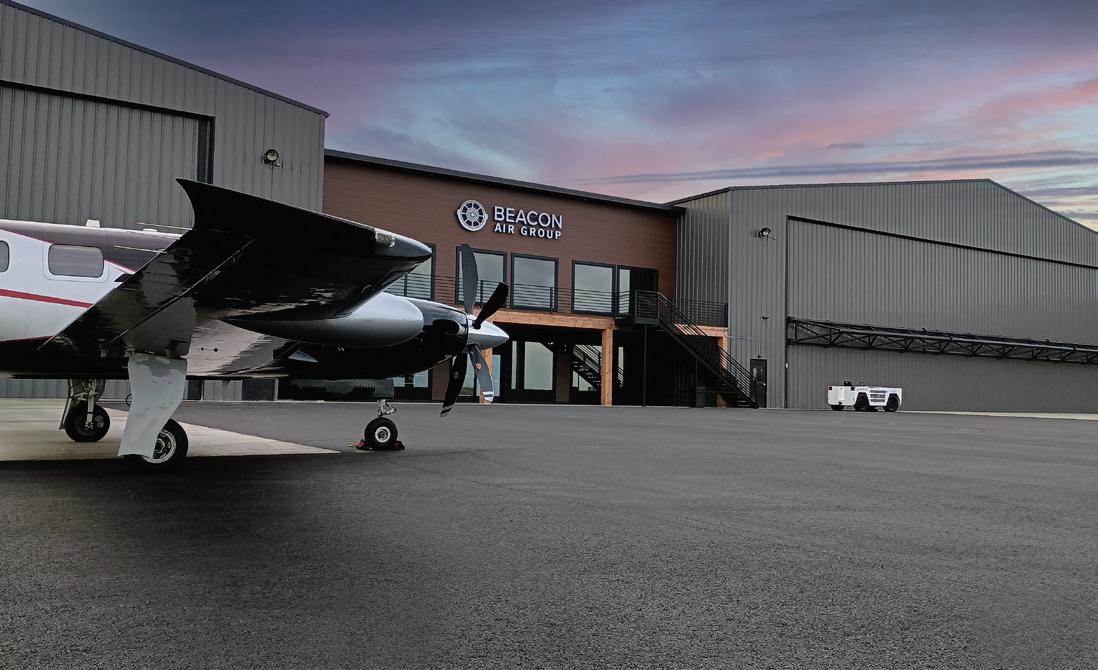
While the founders of Azure Flight Support have been in the FBO game for more than 40 years, the company has only had that name for about the past four years. David Augustin and Allen Howell founded Corporate Flight Management (now Contour Aviation) back in the early 1980s and established an FBO at Nashville-area Smyrna Airport (KMQY).
Along the way, they added two more Tennessee locations, at Crossville Memorial Airport (KCSV) and Cleveland Regional Jetport (KRZR), before divesting from Corporate Flight and rebranding the FBOs as Azure Flight Support in 2019.
With its facility situated on the east side of the field at KMQY for nearly three decades, the company relocated in 2005 to a newly built 4,000-sq-ft FBO on the west side next to the airport authority’s threestory terminal. It ofers a passenger lounge, pilot lounge with snooze room and shower facilities, eight-seat conference room, flight planning area/business center, concierge, onsite car rental, and crew cars. Azure is in the midst of a $200,000 nine-month-long interior refresh of the terminal, including new paint and furniture, renovation of the break room kitchen, and the reconfiguration of ofces to add another conference room.
The 17-acre complex has 50,000 sq ft of heated community hangar space and an additional twenty 1,100-sq-ft T-hangars that can each accommodate a light jet or turboprop. More than 8 acres on its leasehold are available for further development, and it is negotiating with aircraft operators interested in building private hangars to house their flight departments.
A member of the Titan Aviation Fuelsbranded dealer network, the CAA-preferred location has a fuel farm with a capacity of 52,000 gallons of jet-A and 14,000 gallons of avgas. It is served by a trio of

5,000-gallon jet refuelers and a pair of 1,000-gallon 100LL tankers. Azure has held the Department of Defense fueling contract at KMQY for the past decade and can handle virtually anything in the military arsenal up to and including the C-17 Globemaster and the KC-135 aerial refueler.
The company recently entered into a partnership with SMN Investments on a Part 135 charter certificate, and it operates a pair of BAE Jetstream 31 turboprop twins, with a G550 and a Beechjet presently undergoing onboarding. Also as a result of that partnership, Azure acquired a Part 145 maintenance certificate in September. Austin explained to AIN that the location is currently limited to accessory, component, and light general aviation repairs as it works its way up to jets.
The FBO has 20 employees, trained in the NATA Safety 1st professional line service program as well as Titan’s ACE Quality Control program. “We’re fortunate we have a crew here; some are with us for 12 years, some 10, some eight, which is pretty rare in the FBO world with high turnover,” said Azure COO Jenny Hofman. “We don’t have that, and it’s a testament to the kind of
people we’ve got working with us.”
When it comes to customer service, Augustin, Howell, and Hoffman practice hands-on management. “Myself, David, and Allen make sure we greet everyone who walks in here,” explained Hofman. “We’re very active ‘on the floor’ with the day-to-day operations at our locations.” And when it comes to customer service, “We treat people who come through our doors the way we would like to be treated when we go out somewhere that is providing customer service,” she said. “That’s Tennessee—a friendly smile when you arrive at our facility.”
Every year for the past two decades, just after Labor Day, the company turns over one of its Smyrna hangars to the local Rotary Club chapter for a community-wide fish fry, which attracts thousands to the facility. According to Augustin, over that span, the event has generated more than $2 million, which has been funneled into the community for special benefit projects. “Their most recent project is they built an all-inclusive park just across the highway from the airport,” he said. “It’s a good event, and it brings a good following out to the airport."
C. E.
Fort Worth, Texas-based Part 145 repair station Trimec Aviation has received FAA supplemental type certificate (STC) approval for installation of Universal Avionics’ InSight flight display system in Dassault Falcon 2000s and 2000EXs. The InSight system replaces the stock Rockwell Collins Pro Line 4 avionics and includes Universal’s SBAS flight management system and UniLink communications management system, supporting RNP 0.3 instrument approaches, and CPDLC, digital clearances, FANS 1/A+, ATN B1, and push-to-load flight planning from the ground.
Trimec has begun taking reservations for the upgrade and offers customers three options. The primary option is the complete cockpit solution with the CPDLC and FANS 1/A+ and ATN B1 protocols. Customers may alternatively choose to upgrade just the avionics or choose only the CPDLC/FANS option.
ExecuJet MRO Services Australia mechanics have completed EASA-approved maintenance training for the newly operational Dassault Falcon 6X. The training encompasses a six-week program that includes four weeks of theoretical training and two weeks of hands-on practical training on the 6X assembly line, allowing mechanics to be equipped and trained to provide line maintenance for 6X aircraft visiting Australia and the Pacific region.
Jason Jia, licensed aircraft maintenance engineer at ExecuJet, traveled from Australia to France, where he completed the EASA-certified training course in Bordeaux, near Dassault’s final assembly site. CAE conducted the theoretical training in Bordeaux, and the Dassault Training Academy ran practical training there.
“For the practical training, we were trained using virtual reality (VR) as well as actual aircraft,” said Jia. “The Falcon immersive VR training devices allowed us to tour the aircraft from the inside to get a better understanding of the components, the system, and the wiring.”
Hartzell Propeller has named Arrow Aviation Services as the company’s first recommended service facility in India. Based in Kolkata, Arrow Aviation Services is now approved to maintain Hartzell products, providing technical support, full propeller overhaul, delivery, product sales, and warranty work.
Under its new designation, Arrow Aviation must employ technicians who attend Hartzell Propeller training, maintain Hartzell-approved tools and equipment, and meet special process approvals on an ongoing basis.
Embraer Executive Jets has extended Duncan Aviation’s Embraer service center authorizations for another five years. The authorization allows Duncan Aviation’s facilities in Battle Creek, Michigan; Lincoln, Nebraska; and Provo, Utah, to offer support and service for maintenance events on the Phenom 100 and 300, the Legacy 450, 500, 600, and 650, and the Praetor 500 and 600.
“We’re pleased to be able to continue offering Embraer authorized services at our full-service facilities to our mutual Embraer customers,” says Duncan Aviation v-p of sales Ryan Huss. “We’re proud to provide authorized Embraer services in the U.S. to include drop-in services, scheduled maintenance, inspections, and AOG emergencies and structural repairs.”
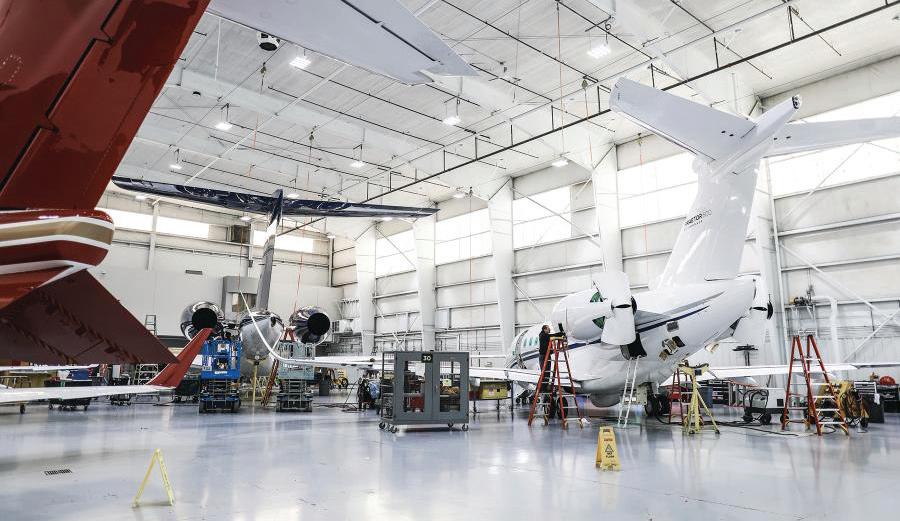
China’s business jet market may have shrunk, but ExecuJet Haite general manager Paul Desgrosseilliers foresees a gradual rebound, buoyed by an uptick in overseas visitors at the company’s Tianjin facility.
Now, with a second MRO center at Beijing’s mega-hub, Daxing International, Desgrosseilliers is optimistic about the increased potential for growth.
“We’ve always served the Beijing market the best we could through Tianjin. At Beijing Capital, the available facilities, parking, and access are quite limited. Providing maintenance support to the fleet has always been challenging due to these constraints,” Desgrosseilliers told AIN. “We don’t have those restrictions at Daxing.”
Slated to open in the second quarter, discussions for the new MRO took place with Capital Airport Holding Business Aviation Management (CBM) during the pandemic. Earlier this year, the two sides finalized the agreement with the aim to establish Daxing as a world-class business aviation hub.
ExecuJet Haite will operate a 5,000-sq-m (54,000-sq-ft) MRO hangar—nearly double the size of its 2,700-sq-m Tianjin hangar. The new facility will increase the capacity of services, including line and base maintenance and AOG services for a range of business jets.
Certified to provide maintenance by the CAAC, EASA, the FAA, and aviation authorities in Caribbean nations, ExecuJet Haite is an authorized service center for multiple aircraft and engine OEMs, including Gulfstream, Dassault Falcon Jet, Embraer Executive Jets, and Rolls-Royce for engines, as well as Honeywell for auxiliary power units.
State-owned CBM will continue to oversee the entire operations of the FBO—an 11,000-sq-m terminal building located in the airport’s 300,000-sq-m business aviation area. Spread across two floors, area A

includes ramp access, aircraft ground services, four passenger lounges, two crew lounges, and six business meeting rooms, plus international and domestic channels. Area B offers similar aircraft access, services, and channels, as well as six passenger lounges, crew lounges, three meeting rooms, a multi-function hall, o f ce rentals, and a restaurant.
“With what CBM was constructing at Daxing, it presented an opportunity to have access to world-class infrastructure and the capital city itself,” he said. “It is a beautiful facility with a maintenance ramp and an engine run on the premises. The FBO has 85 parking slots and convenient aircraft access. We see this as a long-term base for business jets.”
Desgrosseilliers views the time-saving features at Daxing International—streamlined security, easy ramp access, and stateof-the-art facilities—as key selling points for customers. With many businesses shuttered because of Covid, the MRO is strategically positioned to expand market share—a success story already unfolding in Tianjin.
“A lot of what we’re seeing is Covid-driven,” he said. “During the pandemic, Americans were coming in hand over fist. We saw a spike in aircraft sales to North America, with airplanes selling at or above market rate. A lot of aircraft were sold out of China. Competitors have quieted down significantly.”
Having successfully weathered the pandemic, ExecuJet Haite is now enjoying growth. However, the prospect of China experiencing a resurgence in business jets, reminiscent of the boom days witnessed by Desgrosseilliers in 2011 remains to be seen. Uno f cial estimates indicate that the number of China-registered business jets falls within the range of 200 to 250.
Nevertheless, the Boston-born executive has seen MRO activities pick up since the summer and is banking on additional Gulfstream work. “It’s been four years since we’ve had foreigners inside our facility; now they are coming back. Being onsite, meeting face-toface, and seeing my team and the services we provide firsthand. There’s just such a benefit to that. You can’t achieve the same connection through phone calls and Zoom. It feels good to have people back in China.” J.M.
Robinson R66, Oct. 26, 2023, Hawks Nest, New South Wales, Australia
Footage recovered from an onboard video camera showed that the helicopter underwent a series of intensifying attitude excursions as the pilot attempted to override the autopilot, eventually rolling past inverted to a 270-degree right bank before breaking up and crashing into Providence Bay near Hawks Nest. The solo 1,119-hour private pilot was the only casualty.
The personal flight departed from Cressnock Airport at 08:50 local time on a VFR flight to Wallis Island. The pilot coordinated transit through the Williamtown restricted airspace with air traffic control and was cleared to altitudes up to 2,000 feet upon reaching Anna Bay.
The recovered footage showed that at 09:20 the helicopter was at about 900 feet with the autopilot engaged when it rolled slightly to the right, began to climb, and pitched down. During the next 20 seconds, the pilot made cyclic inputs as the helicopter rolled 25 degrees left and pitched up 10 degrees, rolled back and forth 10-15 degrees, then pitched down, rolled over, and broke apart.
Two days after the accident, NSW police divers located the wreckage of the tail boom and most of the cabin in shallow water on the floor of Providence Bay. Visible damage suggested that the tail boom had been severed by a main rotor blade. The section of the cabin ceiling with the video camera attached subsequently washed ashore. The recorded images captured GPS position, acceleration
parameters, and engine and rotor rpm as well as exterior and interior cabin views.
Pilatus PC-12/45, Dec. 14, 2023, Christoval, Texas
A San Diego couple and “three pets” were killed when their single-engine turboprop crashed during an attempted GPS approach to Runway 36 at San Angelo (Texas) Regional Airport. The flight had departed from Jacksonville, Florida at 07:51 CST. At 12:11, while receiving initial radar vectors for the approach, the pilot reported cloud tops between 4,100 and 4,400 feet. The flight was level at 4,300 feet receiving radar vectors for th e approach.
At 12:17:24 the pilot was instructed to “Turn right heading 030, maintain 4,300 until established on the final approach course” and cleared for the approach. Twelve seconds later he transmitted, “We overshot it.” The controller replied, “I know. That’s why I gave you a 030.”
The Pilatus began turning right while descending at about 1,000 fpm, increasing to 5,000 fpm over the next four seconds as the turn tightened. At 12:17:47 the pilot transmitted, “We got a problem.” No further communications were received.
The initial impact crater was adjacent to a small tree cut at a 24-degree angle. “Engine components exhibited torsional deformation and rotational signatures” suggesting that the engine was turning at impact. A suite of Garmin avionics was installed in the 1997-model airplane in 2020. The pilot’s electronic logbook recorded 111 hours in the accident airplane during the preceding year, including 16.3 in actual IMC.
Eurocopter AS350B2, Dec. 19, 2023, Atlantic City, New Jersey
The Philadelphia-based news helicopter crashed into a pine forest while returning from an assignment on the New Jersey shore, killing the pilot and videographer. It had orbited the location seven miles south-southeast of Atlantic City for about 10 minutes before being directed to return. The aircraft was refuelled before the flight, its third of the day.
Two hours later, the television station advised the helicopter’s operator that they’d been unable to reach the crew. State and local authorities initiated a search that located the wreckage in “a densely wooded area of the Hammond State Forest.” Most of it had been consumed by a post-crash fire. Flight control continuity could not be established, but the wreckage showed no evidence of powerplant or rotor failure.
FAA flight-track data showed that about 15 minutes after departure, the helicopter began descending as it drifted right of the direct flight path. In the next 29 seconds it dropped from 1,100 to 250 feet while accelerating from 93 to 115 knots.
Dassault Falcon 20C, Oct. 5, 2021, Thomson, Georgia
The pilot and first officer of an overnight on-demand cargo flight were killed when their 1967-model twin-engine jet struck trees on final approach to Runway 10 at Thomson-McDuffie County
(Georgia) Airport at 05:44 local time. The on- demand Part 135 cargo flight began at 21:32 MDT with a one-hour leg from El Paso to Lubbock, Texas, where the crew was delayed two hours 20 minutes waiting for additional freight to arrive.
At 05:03 Eastern time, the crew asked Atlanta ARTCC for notams regarding the ILS approach to Runway 10 and were advised that the glideslope was out of service. At 05:25 they requested the “ILS” and were cleared for the approach, but while still outside the initial approach fix the captain reported the airport in sight and cancelled IFR. The airport’s pilot-activated approach and runway lights came on at 05:39. ADS-B track data showed that the Falcon passed the final approach fix 500 feet left of course, 600 feet high, and 20 knots fast.
Rather than commanding a go-around, the captain told the first officer to deploy the air brakes, an approach configuration not authorized by the manufacturer. With air brakes, landing gear, and 40 degrees of flaps extended, the airplane entered a rapid descent. The cockpit voice recorder (CVR) captured the pilot warning that they were now low, then a few seconds later that he saw trees in their path. Sounds of increasing thrust were accompanied by the audible stall warning, and the airplane’s descent was no t arrested.
During the flight, the CVR also recorded numerous instances of the captain telling the first officer to “fly the airplane” with instructions to correct deviations from the approach. No altitude call-outs were made during the descent, and at one point the captain told the first officer to “follow the glideslope” though it was out of service. The operator’s records showed that the first officer had never been upgraded to captain despite several years of Falcon 20 experience “due to his lack of aeronautical decision making and airmanship necessary to become a captain.”
Swearingen SA-226AT, Dec. 10, 2021, Manchester, New Hampshire
The 23-year-old commercial pilot’s failure to feather and secure the left engine and increase power on the right following “a perceived…loss of power in the left engine” caused airspeed to decay, resulting in a fatal loss of control just short of the runway threshold. The twin-engine turboprop was on the final segment of the ILS approach to Runway 06 at Manchester Boston Regional Airport at 23:30:42 local time when the pilot reported an engine failure without specifying which engine. Radio and radar contact were lost nine seconds later with the airplane about one-quarter mile from the threshold. ADS-B flight track data showed that during those nine seconds its groundspeed decreased from 99 to 88 knots and it descended 400 feet in a slight left turn. This airplane’s published minimum controllable single-engine airspeed is 92 knots.
The wreckage was found on the riverbank with no debris path leading to a six-bythree-foot crater about two feet deep. Both engines and propellers were found with the main wreckage; neither propeller had been feathered.
Teardown examination of the left engine found that one first-stage turbine blade had separated mid-span, but whether that happened on or before the accident flight was not determined. The second-stage stator assembly was “missing vane material from the 6 to 12 o’clock positions, consistent with thermal damage over a period of time,” and microscopic analysis showed that the second stage had operated at temperatures 500 degrees higher than the first for 10 to 100 hours. No anomalies were found in the right engine.
The NTSB concluded that the damage to the left engine would have reduced performance without causing a total loss of power, and that if the pilot had feathered its propeller and increased power on the right
engine, “the airplane’s performance should have been sufficient for the pilot to complete the landing on the runway.” His 2,257 hours of flight experience included 496 in multi-engine airplanes, 118 in the SA-226AT.
Airbus Helicopters AS350B3, Nov. 1, 2022, Verdal, Trøndelag County, Norway
The Norwegian Safety Investigation Authority (NSIA) attributed the helicopter’s crash 10 to 20 seconds after liftoff to the pilot’s loss of visual references in fog. The pilot survived with serious injuries but both passengers were killed when the craft struck the ground 450 meters (1,475 feet) from the helipad. Improperly stowed cargo, incorrectly fastened restraints, and the failure of the rotary buckle on one safety harness were cited as having contributed to ejecting the passengers from the cabin. The passengers’ dog was also ejected but survived.
The pilot first attempted to fly them to the Gaundalen mountain farm in Snåsa municipality two days earlier, but had to abort due to fog in the mountains. The next day fog at the helicopter’s base in Verdal precluded taking off. A break in the fog allowed two other company helicopters to depart at about 08:15 the morning of the accident.
At about 10:30 that morning, the accident pilot thought the fog was lifting in the northeasterly direction of the flight but had to maneuver around a clump of trees adjacent to the helipad. When interviewed by the NSIA, he was unable to remember anything between lifting off and seeing the helicopter approach the ground at high speed, but immediately after the accident he told rescuers, “It was like flying into a wall of fog…everything was just white. The fog just closed around me.” z
JUST
AROUND THE
March 16, 2024
The FAA has extended the deadline from Jan. 24, 2024 to March 24, 2024 to accept comments on its draft environmental assessment (EA) concerning proposed departure procedure amendments at Bob Hope Hollywood Burbank Airport (KBUR), California. The draft EA evaluates what the agency has determined are the potential environmental impacts of adopting new procedures for Runway 15 departures at KBUR. The agency’s proposed procedural changes are intended to maintain safety and efficiency for airspace users while meeting the terms of a settlement agreement that the FAA entered into with local homeowners’ associations.
The comment period has been extended 60 days, to April 5, 2024, for the December 2023 notice of proposed rulemaking that would require certain FAA Part 145-certified repair stations located outside the territory of the U.S. to implement an agency-approved employee drug and alcohol testing program. The program would apply to technicians who perform safety-sensitive maintenance functions on certain aircraft operated under Part 121 and 135.
Starting April 10, 2024, for tourists and July 10, 2024, for crewmembers, travelers from the U.S., Canada, and Australia will be required to obtain a visa to enter Brazil. According to international business aircraft flight planning service Universal Weather and Aviation, travelers should apply online at least 15 days before their intended arrival to account for the approximately five-day processing period. Universal advises travelers to carry two printed copies of the electronic visa.
April 24, 2024; Oct. 24, 2024; April 25, 2025
Certain air carrier airports certified under FAR Part 139 will be required to submit an implementation plan for a safety management system (SMS) on the following deadlines: April 24, 2024, for airports designated as hubs; Oct. 24, 2024, for airports with 100,000 or more annual operations over the previous three years; and April 25, 2025, for airports classified as port of entry, landing rights, user fee, and international facilities. The SMS must be implemented within 12 months of receiving FAA approval of the implementation plan.
Sept. 9, 2024
Final compliance date is Sept. 9, 2024, for reporting historical records concerning
training, alcohol testing, qualification, proficiency, and disciplinary action records that date before Jan. 1, 2015, to the FAA’s new pilot records database (PRD). Also beginning on Sept. 9, 2024, the Pilot Records Improvement Act (PRIA) ceases to be effective and will not be an available alternative to PRD. Also after this date, each entity that holds an operating certificate under Part 121, 125, or 135—or that holds management specifications for Part 91K—must report to the PRD all historical records kept in accordance with PRIA dating from Aug. 1, 2010, until June 10, 2022. Since June 2023, certain operators under Part 91, as well as those under Part 91K and 135, were required to complete submissions to the PRD of all historical records dating on or after Jan. 1, 2015.
Dec. 2, 2024
Starting on Dec. 2, 2022, EASA Part 145 maintenance organizations were required to meet revised regulations that were published in November 2021. However, there is a two-year transition period, to Dec. 2, 2024, to allow maintenance organizations to correct any findings of noncompliance with the new Part-145 requirements. The main change introduced in the regulation is the required implementation of a safety management system. To support the SMS processes,
several organization requirements have been changed including the safety policy and internal occurrence reporting.
Jan. 1, 2025
EASA has implemented a two-year postponement requiring certain large airplanes certified in Europe to be equipped with an emergency locator transmitter (ELT) with distress tracking capability: ELT(DT). An ELT(DT) is designed to activate automatically in flight when it detects conditions indicative of a distress situation, or the flight crew can manually activate the ELT(DT). Under the new rules, airplanes with a mtow of more than 27,000 kilograms (above 59,500 pounds) and first issued their CofA on or after Jan. 1, 2024 will be required by Jan. 1, 2025 to be equipped with an ELT(DT) that autonomously transmits information from which the aircraft’s position can be determined by the operator at least once every minute when in distress.
Feb. 16, 2025
Scheduled to start on Feb. 16, 2025—a year delay—the U.S. Veterans Administration (VA) will have the authority to begin reimbursing non-contract ground and air ambulance transportation at rates “significantly below costs,” according to providers. Critics charge that the move will force providers to “downsize operations and reduce hours of availability while compromising the ability of veterans, particularly in rural areas, to receive prompt medical transport.” Under the new rules, the VA will be allowed to pay the “lesser of the actual charge or the amount determined by the Medicare Part B Ambulance Fee Schedule.” The VA currently pays for the actual costs of such medical transports.
For the most current compliance status, see: ainonline.com/compliance



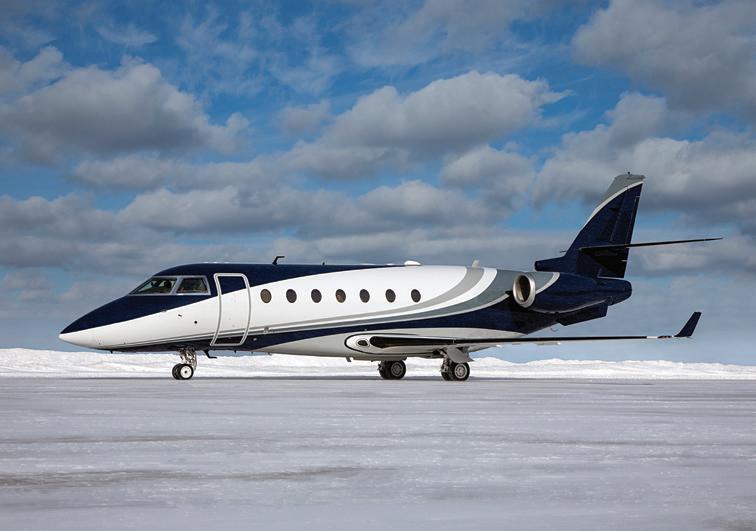



Duncan Aviation paints more than 200 aircraft per year in our state-of-theart facilities. Our locations are capable of painting all sizes of business jets utilizing the latest in paint products, equipment, and technology.
Eviation Aircraft appointed Andre Stein CEO and Jeff Hurford CFO. Stein brings more than 25 years of experience at Embraer, including co-founding Eve Air Mobility and serving as CEO at Eve. Hurford most recently served as platform director of the SR1X program at Cirrus Aircraft.

Tom Burke joined CHC Helicopter as CEO. Burke previously served as president and CEO of Rowan Companies and Valaris.
David Paddock, president of General Dynamics subsidiary Jet Aviation, will take over as president of General Dynamics Land Systems in April. Meanwhile, Jet Aviation Basel (Switzerland) senior v-p of operations Jeremie Caillet will become president of the MRO/FBO chain.
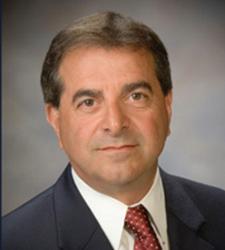
Lynda Coffman took on the role of CEO of Women in Aviation International (WAI) on January 22. She previously served as v-p of United Airlines, as well as president of United subsidiary United Ground Express. Robert Stangarone took on the role of president and CEO of the nonprofit Corporate Angel Network (CAN). Courtney Easton, CAN’s senior director of operations and marketing, had steered the organization over the past year. Stangarone brings some five decades of aviation and aerospace experience as a journalist, communicator, and consultant to his new role, including positions with multiple manufacturers and managing his own consultancy, Stangarone & Associates.
Luke Savoie was officially appointed as CEO of Elbit Systems of America on January 29 after serving the company as president and CEOelect since 2023. He took the place of Raanan Horowitz, who had been president and CEO since 2007.
Charlie Creech, former president of North State Aviation, has joined FlyExclusive as senior v-p of MRO operations. Creech will oversee operations at the company’s MRO facility in Kinston, North Carolina.
Doug Crowther was appointed president of Odyssey Avation United States. Crowther previously worked for Air Service Hawaii as area director and for Ross Aviation (Hawaii) as general manager. Odyssey Aviation U.S. also announced Ken Allison, one of the company’s co-founders, as CEO.
Thrive Aviation promoted Rickey Oswald from senior v-p of flight operations and fleet management to COO. Before joining the company, Oswald had held a variety of positions within the aviation industry, including chief pilot, director of operations, and management executive.

Adam Hohulin is taking on the role of senior v-p of operations at Tradewind Aviation. He brings more than 25 years of expertise in the aviation industry, including 18 years at Sentient Jet.
Gulfstream Aerospace promoted Amy Ariano, v-p of human resources, to senior v-p and chief people officer. Ariano’s previous experience included multiple roles at ConAgra Foods and SPX Corp.
Daher appointed Cédric Eloy to lead its industrial services division and join the Daher executive committee. Aymeric Daher now manages the logistics division and has also joined the company’s executive committee.
Christine Sheridan joined Mesinger Jet Sales as director of business development. She has more than 17 years of experience working as a financial analyst in the private aviation segment.
King Aerospace hired Bob Blanchard as v-p of business development and special projects. Blanchard most recently served as an executive director at U.S. Customs and Border Protection, overseeing six National Air Security Operations Centers.

Brent Eborn was promoted from business development manager to general manager at Jackson Jet’s Boise, Idaho FBO. He has been with the company for almost two decades.
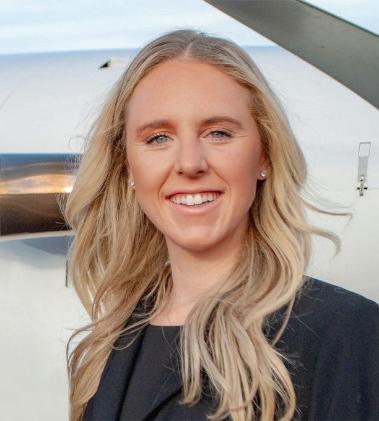
Anna Cutter was promoted to flight department director at Cutter Aviation. She originally started at the company as the Texas charter and sales coordinator.
The National Air Transportation Association (NATA) promoted Steve Berry from managing director of safety and training to v-p of education and safety. Berry was previously NATA’s training and content manager and also had served as its manager of fuel quality and safety.
West Star Aviation promoted David Green to program manager of line services at its facility in East Alton, Illinois. Green, who previously served in the U.S. Navy, will control aircraft and fueling operations at the facility.
1st Capital Bancorp and 1st Capital Bank appointed Joel Keller as executive v-p and CFO. Keller was recently senior v-p and CFO at Liberty Bank.

Laura Zehm was appointed as a director at 1st Capital Bancorp. Zehm was previously the chief administrative officer and CFO at Montage Health and is a member of the National Association of Corporate Directors.
Abigail Camp Wenk was promoted to deputy staff director of the U.S. House of Representatives Transportation and Infrastructure (T&I) Committee. Corey Cooke, general counsel for the T&I Committee, is taking on additional responsibilities related to overseeing policy development. Meghan Holland was promoted to deputy general counsel, having served the committee as senior counsel since December 2022. Another recent promotion within the T&I Committee is Leslie Parker, who is now director of member services and coalitions. z
Gulfstream Aerospace president Mark Burns was honored with the Living Legends Lifetime Aviation Industry Leader Award in January. Burns also is a v-p at General Dynamics and a member of the board of directors at the General Aviation Manufacturers Association.
Horst Bergmann, former CEO and chairman of Jeppesen, where he worked for more than 40 years until retiring in 2003, passed away on January 21. He also served as chairman of the General Aviation Manufacturers Association (GAMA) in 1996.
According to GAMA president and CEO Pete Bunce, “Horst Bergmann was a passionate champion for the aviation community and an influential and visionary leader. His hard work and dedication led to Jeppesen’s significant growth in employees and revenues during his tenure and he was instrumental in Jeppesen’s transformation from a paper-based navigational aid provider to a leader in integrated aviation solutions.”
Jeppesen managing director Jens Schiefele also remarked on Bergmann’s legacy: “Horst was a driving force behind making Jeppesen charting a renowned product."
Industry veteran Dan Prosser passed away on January 4 at the age of 74. Prosser worked on the C-130, C5, C-119, and C-121 aircraft during his time in the military. He was a member of the Aircraft Electronic Association’s board of directors from 1980 to 1984 and again from 1992 to 1995 and he served as the board’s chair in 1995. His career included working at Gogo Business Aviation (formerly Aircell) as the director of business development in addition to companies such as Avidyne, Raytheon, Cutter Aviation, IFR Avionics, and Chaparral Aviation.
Solairus Aviation executive Chad Davidson passed away on January 14 at the age of 29 as a result of a general aviation aircraft accident in Massachusetts. Davidson, also known as “Super Chad,” joined the company’s charter sales team at the age of 19. “Chad was a life force in the Solairus organization, not just because of his relationships and day-to-day influence on our business but because he represented what was possible for the future of our company and business aviation overall,” shared Solairus CEO Dan Drohan. To honor Davidson’s memory, the company established the Chad Davidson Business Aviation Leadership Scholarship Fund for EmbryRiddle Aeronautical University students.
continued from page 19
Gulfstream Aerospace has issued a maintenance operations letter to operators of its aircraft, first advising pilots to plan flights around known areas where jamming or spoofing is occurring. “If it is necessary to fly through such areas, consider utilizing ground-based navigation sources.”
Pilots should report any anomalies to ATC, the company advised. “When applicable, flight crews should request vectors and/or utilize ground-based navigation. Airplane Flight Manual (AFM) procedures should be followed for any Crew Alerting System (CAS) messages and indications of degraded navigation. Procedures should be followed for any CAS messages and indications of degraded navigation.”
Gulfstream helped produce the December Honeywell service information letter and is working with Collins to provide similar information to operators flying its airplanes equipped with Collins avionics.
According to Bombardier, the company “has been very proactive with its customers about the realities of GPS spoofing.
“In late December 2023, Bombardier released an Advisory Wire to enhance the communication to all our customers, adding to the FONs (Flight Operation Notifications) we published earlier that year. In addition, we have published several updates in our customer communications last year to inform customers of the issue. We have also worked closely with the(FAA and various fleet operators to ensure they have the most up-to-date information.”
AIN is aware of other efforts that will address GNSS jamming and spoofing and will report about these as they are unveiled. One will be announced at the AEA avionics show March 19 and another is a GPS anomaly detection app that has been released by flight planning app developed APG. Meanwhile, OpsGroup recommends that pilots view areas affected by GPS interference at the gpsjam.org website and “don’t fly into any red or yellow hexagons!” z

JAMES HOLAHAN (1921-2015), FOUNDING EDITOR, WILSON S. LEACH, FOUNDER & CHAIR EMERITUS
EDITOR-IN-CHIEF – Matt Thurber
MANAGING EDITOR – Charles Alcock
NEWS EDITOR–AIN PUBLICATIONS – Chad Trautvetter
EDITOR AIN MONTHLY MAGAZINE – Kerry Lynch
SENIOR EDITORS – Curt Epstein, Gregory Polek – Show Editions, Hanneke Weitering – Technology Editor
COPY EDITOR – Jessica Reed
NEWS REPORTER – Sarah Rose
CONTRIBUTORS – Cathy Buyck – Europe, David Donald – U.K., Mark Huber – Rotorcraft, Jennifer Leach English, David Jack Kenny – Safety Gordon Gilbert, Jennifer Meszaros – Southeast Asia, Dale Smith, Richard Pedicini, James Wynbrandt
PRODUCTION MANAGER – Martha Jercinovich
GRAPHIC DESIGNER – Grzegorz Rzekos
DIRECTOR OF VIDEO – Ian Whelan
SENIOR DEVELOPER – Cameron MacPherson
FRONT END DEVELOPER – David Lohmeyer
EXECUTIVE CHAIR – Dave Leach
PRESIDENT – Ruben Kempeneer
HEAD OF PEOPLE & BRAND – Jennifer Leach English
SENIOR DIRECTOR, INDUSTRY AFFAIRS AND EVENTS – Nancy O’Brien
ADVERTISING SALES
SALES TEAM LEAD - Victoria Tod – Northeastern U.S./Eastern Canada/United Kingdom, +1 (203) 733-4184
Michelle James – Western U.S./Western Canada, +1 (520) 343-0236
Susan Joyce – Midwestern U.S., Southeastern U.S./Caribbean/Brazil +1 (303) 641-5505
Diana Scogna – Europe/Middle East, +33 6 62 52 25 47
DIRECTOR OF MARKETING AND CLIENT SERVICES – Lisa Valladares
AUDIENCE DEVELOPMENT DIRECTOR – Eileen Silberfeld
MARKETING SPECIALIST – Alyssa Barry
SOCIAL MEDIA MARKETING – Zach O’Brien
SALES ADMINISTRATOR – Cindy Nesline
DIRECTOR OF FINANCE & HUMAN RESOURCES – Michele Hubert
ACCOUNTS PAYABLE – Mary Avella
ACCOUNTS RECEIVABLE – Bobbie Bing
U.S. HEADQUARTERS
214 Franklin Ave., Midland Park, NJ 07432, +1 (201) 444-5075
Advertising Inquiries: +1 (201) 345-0085, adsales@ainonline.com
Circulation Inquiries: +1 (201) 345-0085, subscriptions@ainonline.com
WASHINGTON, D.C. EDITORIAL OFFICE:
Kerry Lynch: klynch@ainonline.com, Tel: +1 (703) 969-9195
EUROPEAN EDITORIAL OFFICE:
Charles Alcock: calcock@ainonline.com, Tel: +44 7799 907595

“The AIN CALS event has been a refreshing experience for leaders within the corporate aviation community and the vendors that support their businesses. 100% engagement for 2.5 days. Truly a working event that leaves us all a bit tired but very enthused!”
– 2024 CALS West fight department atendee
“The AIN CALS event provides excellent opportunities for high level interaction between vendors and clients. The one-on-one time and small group sessions are very valuable settings.”
– 2024 CALS West sponsor




